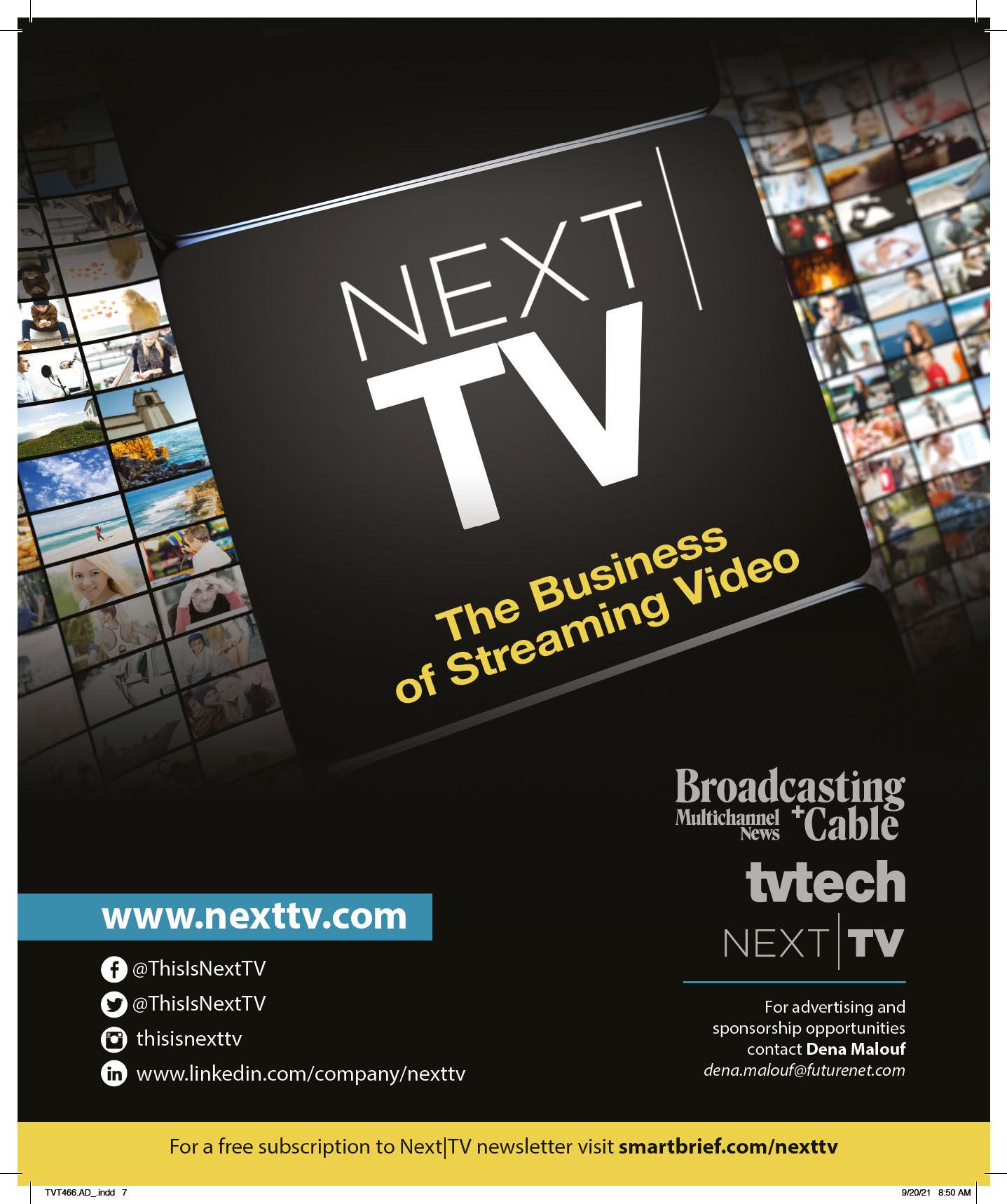Welcome to the November 2022 issue of



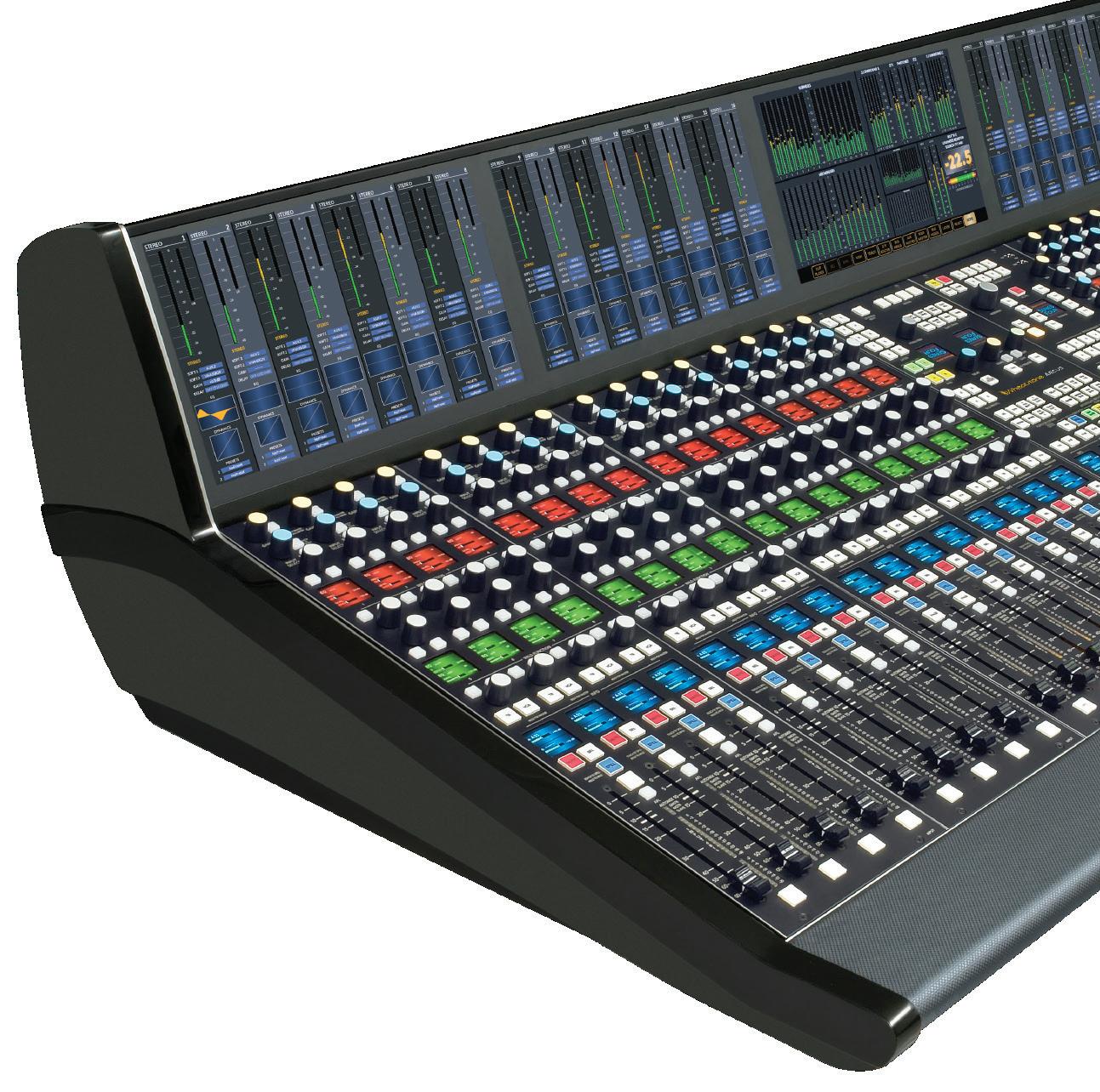
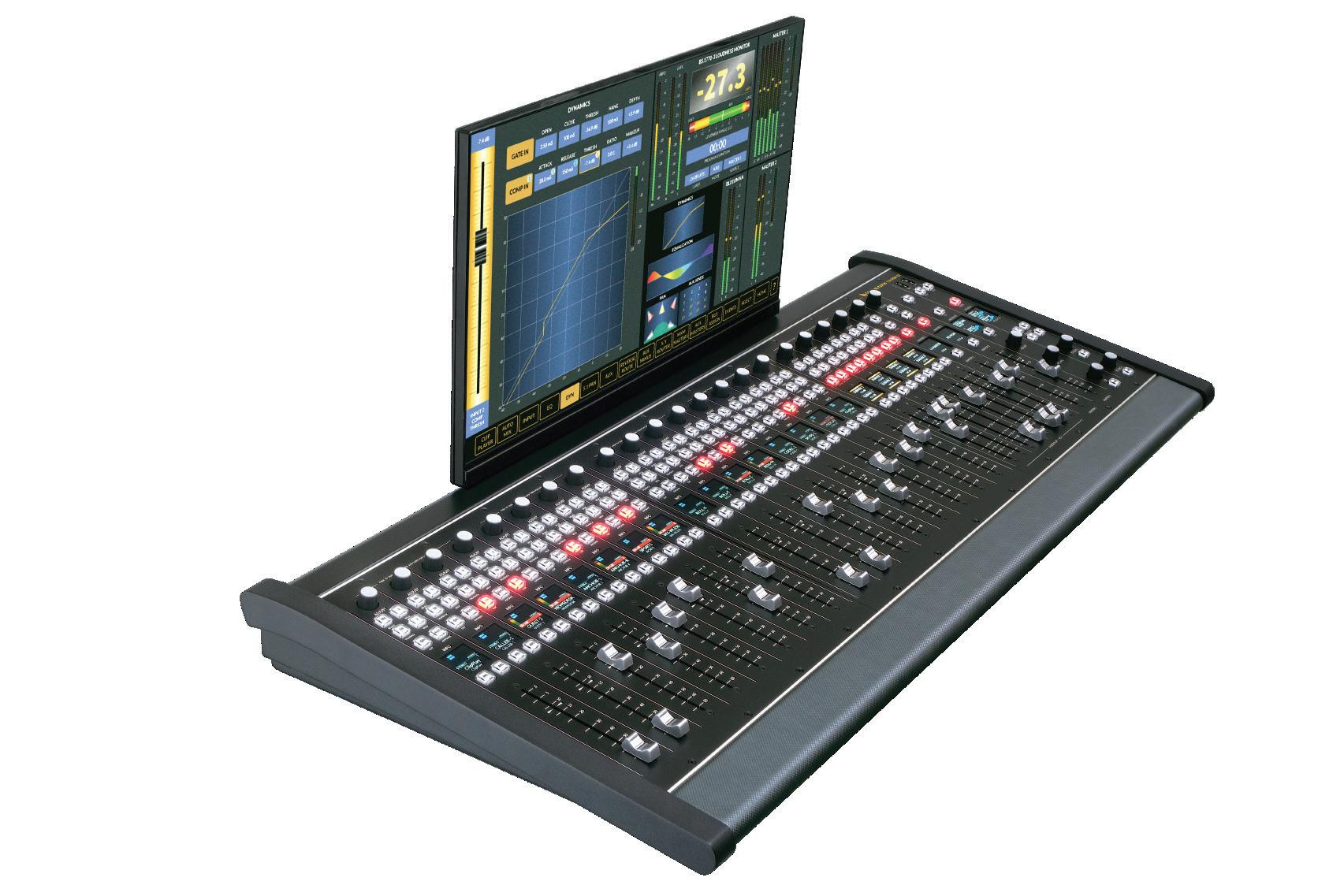










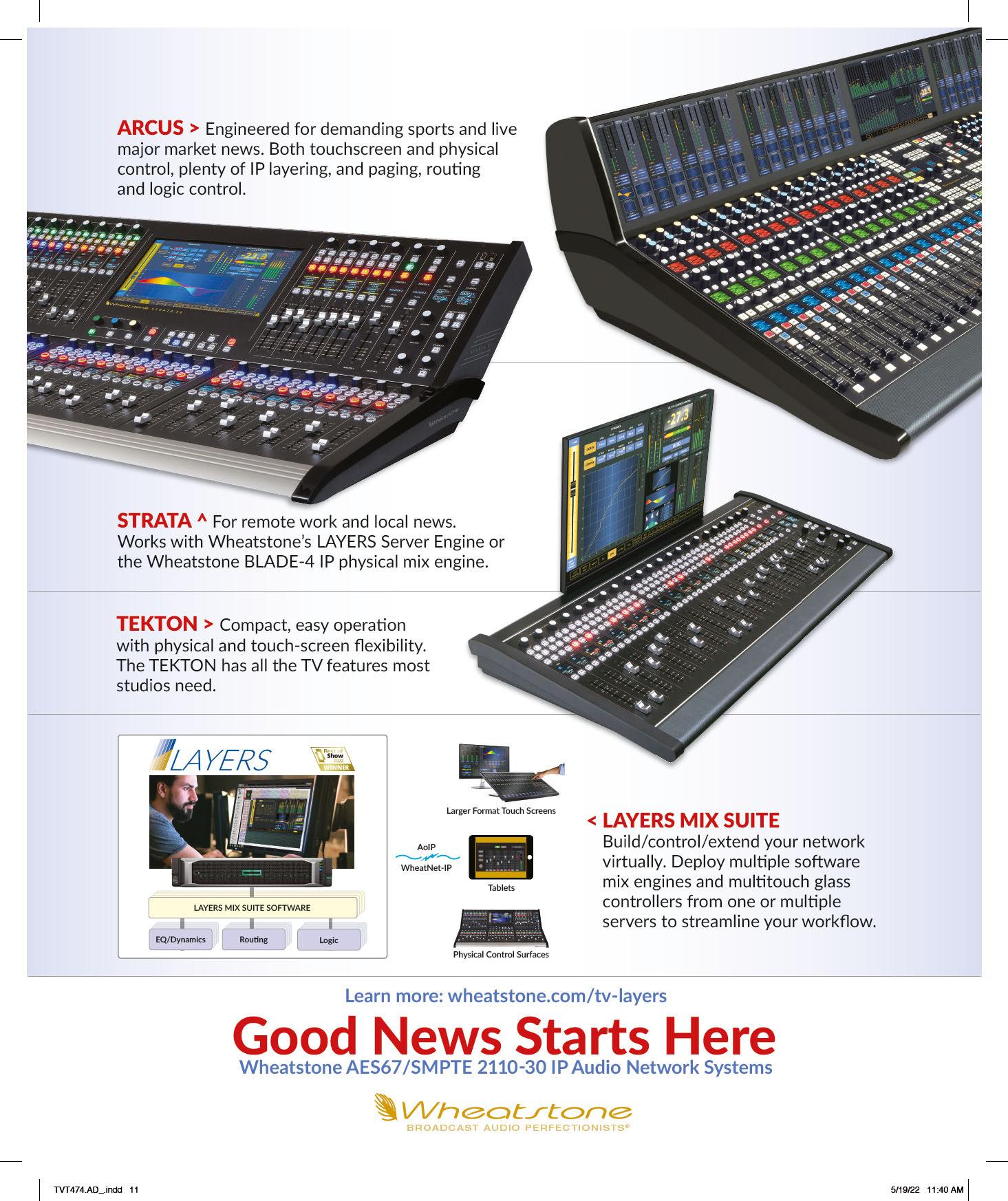 By Mark R. Smith
By Mark R. Smith
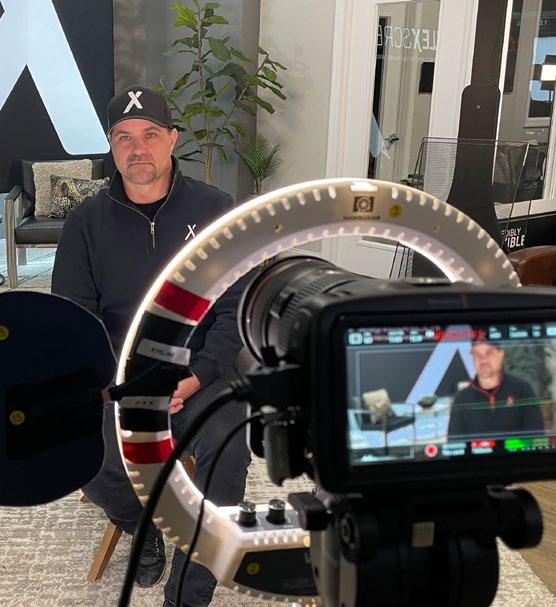

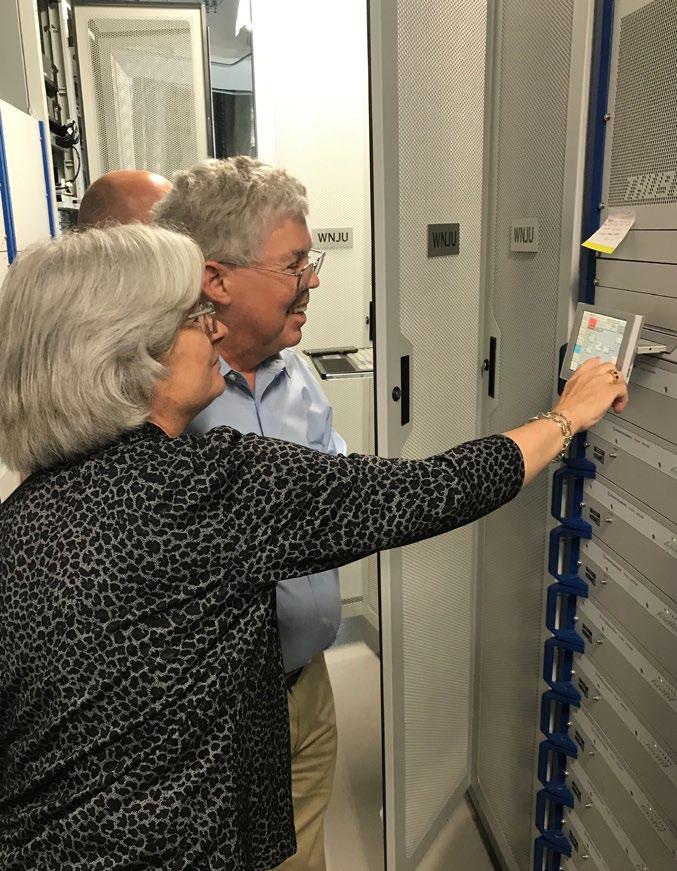 By Susan Ashworth
By James Careless
By Susan Ashworth
By James Careless
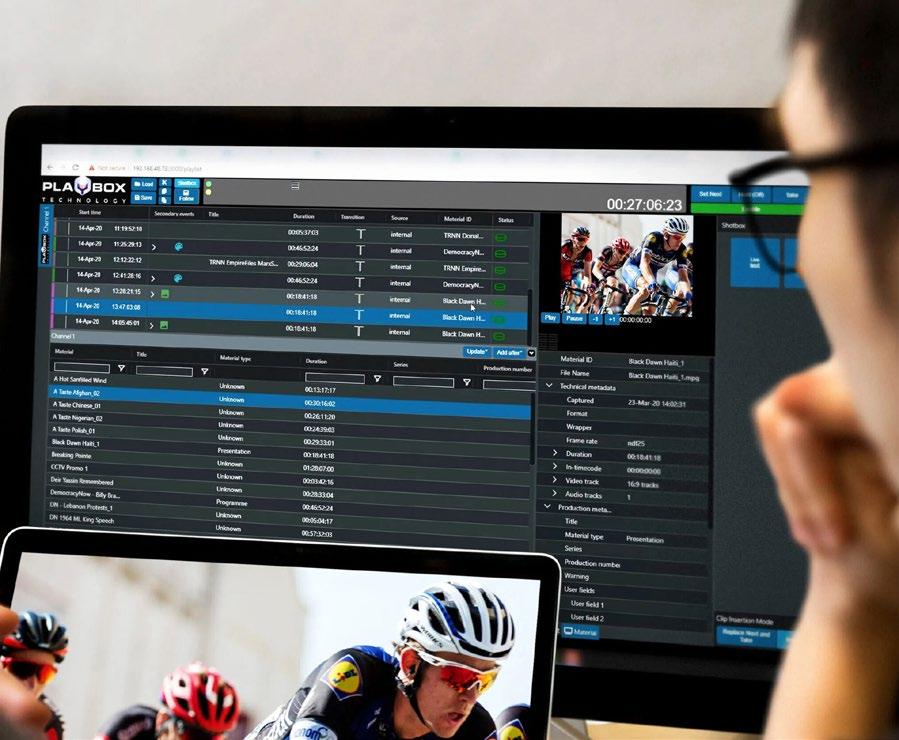

















 By Mark R. Smith
By Mark R. Smith


 By Susan Ashworth
By James Careless
By Susan Ashworth
By James Careless


Five years ago this month, the FCC formally approved the ATSC 3.0 standard (aka NextGen TV), ushering in a new generation of broadcast ing that reflects the reality of 21st century media. The standard, which combines free over-the-air broadcasting with IP capabilities reflects years of development and is arguably the most advanced standard of its kind worldwide.

Five years is a good milestone to take a look at where we stand. Sta tion deployments have accelerated over the past year to the point where more than half of the nation’s households can access a NextGen TV signal and consumer set sales are fairly healthy, with the CTA predicting that 4.5 mil lion-enabled sets will be sold in the U.S. by the end of the year. Four of the world’s largest set makers market NextGen TV, including LG, Samsung, Hisense and Sony, and sell TV sets that support ATSC 3.0.
Despite these stats, public awareness is still fairly low when compared to other forms of media. Consumers don’t replace their TV sets very often so broadcasters need to find other ways to promote public access to NextGen TV, something that was on the mind of one FCC Commissioner recently.
Commissioner Geoffrey Starks, who recently spoke about NextGen TV in a speech at the University of Pennsylvania Cary Law School Center for Technology, Innovation and Competition, suggested that the commission become more involved to help move the transition along, perhaps looking to the previous transition to ATSC 1.0 for answers.
“Is there perhaps an effort for the FCC to lead here, as we did in developing a Congressionally mandated digital transition equipment subsidy program, or using our role as the regulator of television equipment? Let’s get creative,” he said.

Although Starks was highly optimistic about the chances for NextGen TV’s success, he also warned about privacy and security—issues that are foremost among many media executives when it comes to using the full potential of the standard. With the ability to collect massive amounts of data from viewers, broadcasters have a responsibility to protect these viewers, especially since broadcasters are public stewards of radio spectrum.
“We need to be on the lookout for how to build in privacy-protective measures to this new technology while it’s developing,” Starks said. “We all know a lot more about personal data collection and use now than we did when tech companies first started collecting reams of this data 15–20 years ago. Broadcasters have the opportunity to live up to their reputations as trusted members of their communities and be good actors from the start. I call on them to do so.”
Among the selling features of NextGen TV is that it can do the same things as OTT but so much more—emergency alerting, datacasting, personalization far beyond the capabilities of current services, to name a few. But along with these advanced features comes obligations not expected from other media. Local broadcasting, in particular, scores high points for trust and accuracy among local viewers. Let’s make sure that trust is maintained and fulfill Commissioner Starks’ call for responsible stewardship when it comes to privacy and security as the transition continues.
Tom Butts Content Director tom.butts@futurenet.comFOLLOW US www.tvtech.com twitter.com/tvtech
CONTENT Content Director
Tom Butts, tom.butts@futurenet.com
Content Manager
Terry Scutt, terry.scutt@futurenet.com
Senior Content Producer George Winslow, george.winslow@futurenet.com
Contributors Gary Arlen, Susan Ashworth, James Careless, Kevin Hilton, John Maxwell Hobbs, Craig Johnston, Bob Kovacs and Mark R. Smith
Production Managers Heather Tatrow, Nicole Schilling
Managing Design Director Nicole Cobban
Senior Design Director Cliff Newman

Vice President, Sales, B2B Tech Group Adam Goldstein, adam.goldstein@futurenet.com
To subscribe, change your address, or check on your current account status, go to www.tvtechnology.com and click on About Us, email futureplc@computerfulfillment.com, call 888-266-5828, or write P.O. Box 8692, Lowell, MA 01853.
TV Technology is available for licensing. Contact the Licensing team to discuss partnership opportunities. Head of Print Licensing Rachel Shaw licensing@futurenet.com
Senior Vice President Group Elizabeth Deeming VP, B2B Tech Group, Carmel King Head of Production US & UK Mark Constance Head of Design Rodney Dive
FUTURE US, INC. 130 West 42nd Street, 7th Floor, New York, NY 10036
All contents © 2022 Future US, Inc. or published under licence. All rights reserved. No part of this magazine may be used, stored, transmitted or reproduced in any way without the prior written permission of the publisher. Future Publishing Limited (company number 2008885) is registered in England and Wales. Registered office: Quay House, The Ambury, Bath BA1 1UA. All information contained in this publication is for information only and is, as far as we are aware, correct at the time of going to press. Future cannot accept any responsibility for errors or inaccuracies in such information. You are advised to contact manufacturers and retailers directly with regard to the price of products/services referred to in this publication. Apps and websites mentioned in this publication are not under our control. We are not responsible for their contents or any other changes or updates to them. This magazine is fully independent and not affiliated in any way with the companies mentioned herein.
If you submit material to us, you warrant that you own the material and/or have the necessary rights/permissions to supply the material and you automatically grant Future and its licensees a licence to publish your submission in whole or in part in any/all issues and/or editions of publications, in any format published worldwide and on associated websites, social media channels and associated products. Any material you submit is sent at your own risk and, although every care is taken, neither Future nor its employees, agents,subcontractors or licensees shall be liable for loss or damage. We assume all unsolicited material is for publication unless otherwise stated, and reserve the right to edit, amend, adapt all submissions.
Please Recycle. We are committed to only using magazine paper which is derived from responsibly managed, certified forestry and chlorine-free manufacture. The paper in this magazine was sourced and produced from sustainable managed forests, conforming to strict environmental and socioeconomic standards.
TV Technology (ISSN: 0887-1701) is published monthly by Future US, Inc., 130 West 42nd Street, 7th Floor, New York, NY 10036-8002. Phone: 978-667-0352. Periodicals postage paid at New York, NY and additional mailing offices. POSTMASTER: Send address changes to TV Technology, P.O. Box 848, Lowell, MA 01853.


Amid longstanding worries that the elimination of third-party cookies could have a major impact on the digital ad industry, the National Association of Broadcasters and Borrell Associates have released a new study that esti mates broadcast TV and radio would lose $2.1 billion in digital advertising revenue annually, representing 6.3% of the industry’s total advertising revenue, if third-party cookies were eliminated today with no privacy-preserving alternatives.
Google has said that it will begin phasing out third-party cookies that have traditionally been used to track online behavior in its web browser Chrome in the second half of 2024.

The study, "State of the Industry Report: What The Loss Of Third-Party Cookies Means For Broadcasters," examined the phaseout of third-party tracking cookies used in digital advertising to estimate the financial impact on broadcasting.
Borrell estimated the immediate
elimination of third-party data would result in an annual loss of $1.1 million for the average TV station and over $730,000 for the average multistation radio market cluster, with these losses possibly 40% larger by the end of 2024. The study found programmatic display and audience extension ads—the largest single sources of digital revenue for many broadcasters—would be negatively impacted by the phaseout of cookies, though previous research has found publishers are overestimating their value and profitability, NAB said.
Yet, the study stressed that the phase-out of third-party cookies offers an opportunity for broadcasters to increase their digital advertising revenue by spurring the development of initiatives focused on firstparty data, or data that is set and accessible only by a website owner.
George Winslow
Streaming's share of TV viewing hit another recordhigh share in September, capturing 36.9% of overall television usage as YouTube emerged as the most popular streaming platform, beating out Netflix for the first time according to Nielsen's latest report from The Gauge, the media measurement company's monthly total TV and streaming snapshot.
Broadcast also saw an increase in September with its share of TV climbing to 24.2%, while cable's share dropped to 33.8%. Television usage as a whole was up 2.4% in September compared to August.
The broadcast category showed the largest month-overmonth increase with a 12.4% bump in usage in September, which was driven by an impressive 222% uptick in sports viewing, Nielsen reported. This led to an additional 2.1 share points for broadcast this month compared to August, its largest share of television since May 2022 when it captured 24.4%.
But on a yearly basis, broadcast's viewing volume was down 7.1% compared to one year ago, and the category lost 2.1 share points, according to Nielsen.
George Winslow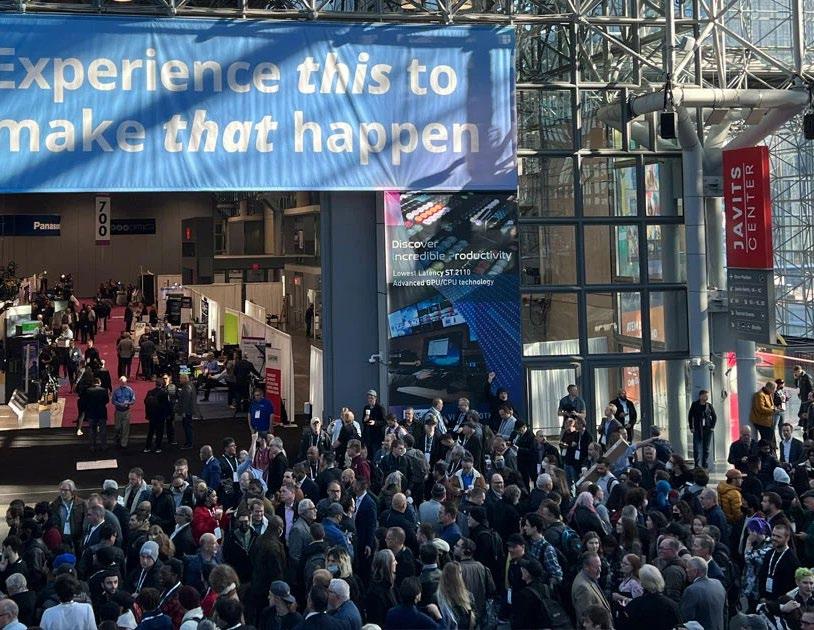
NAB says 9,576 attendees visited NAB Show New York, held at the Javits Center, Oct. 19–20. This year’s event marks the first time the show was held in person since 2019. The show floor featured 245 exhibitors showcasing the latest technology in media and entertainment. The 2023 NAB Show New York will be held Oct. 25–26, 2023.
AES, which was held in conjunction with NAB Show New York, reported that nearly 7,000 attended its show, which featured 100 exhibitors. Combined, the two shows attracted approximately 16,500 attendees and hosted 350 exhibitors.
“The turnout for NAB Show New York reinforces the power of our brand and the value of in-person trade shows,” said NAB President and CEO Curtis LeGeyt. “We are incredibly thankful to our exhibitors, speakers, partners and attendees for making this event a success, and we are excited to build on the momentum leading into NAB Show in Las Vegas.”
Tom Butts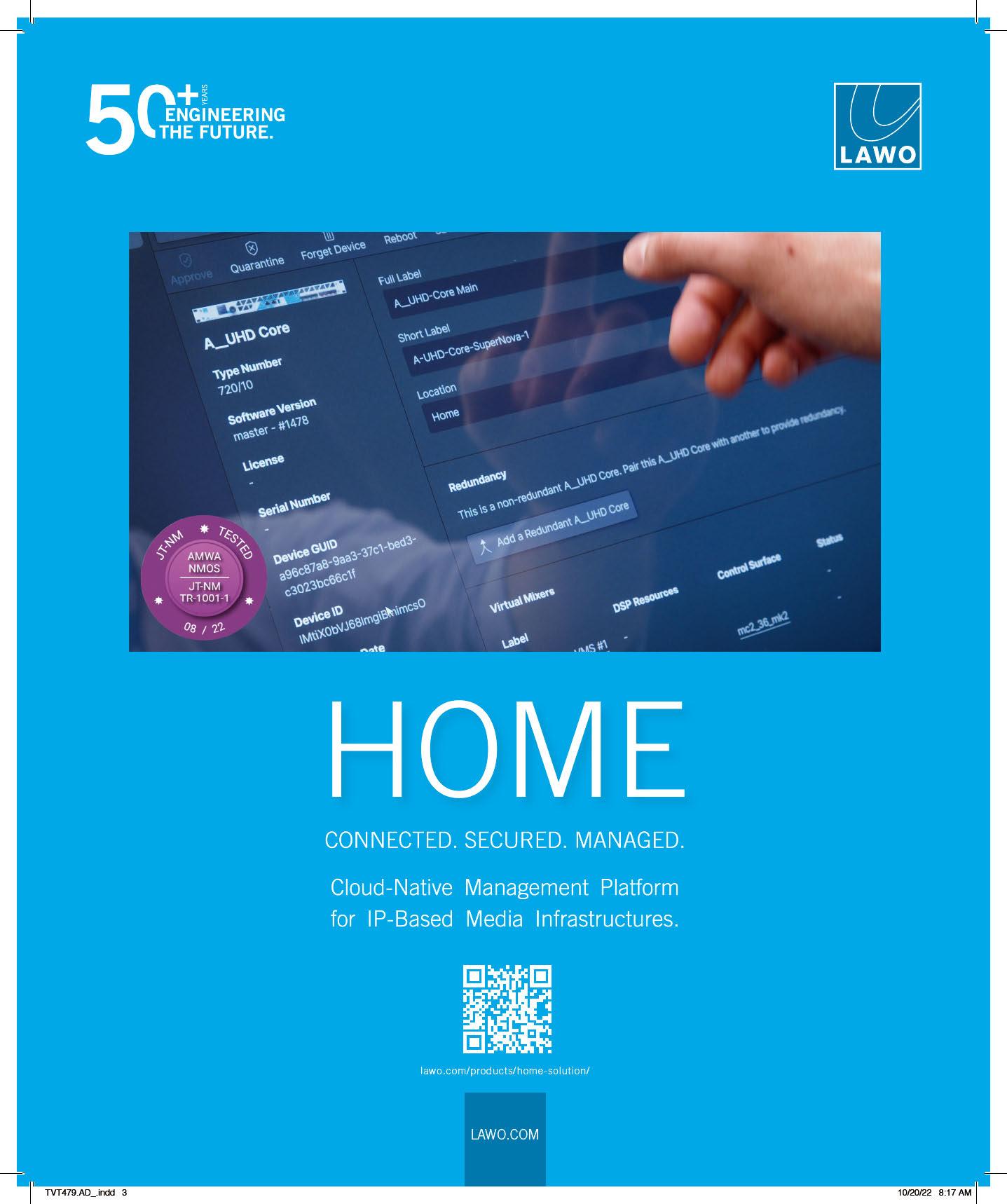
British publisher C21 says it has issued a letter of intent to the management of the National Association of Television and Programming Executives to acquire the assets of the association after it entered Chapter 11 earlier this month. Any such acquisition would require and be subject to the approval of the bankruptcy court, C21 said.
NATPE announced last month that it planned on filing bankruptcy due to being adversely impacted by the COVID pandemic, which prevented the association from holding events that typically generated the bulk of their revenues. These cancellations forced NATPE to operate on its financial reserves and ultimately forced it to file for Chapter 11 to reorganize the NATPE business structure, it said.
The association held its first inperson gathering in two and a half years in Budapest in June this year and announced then that it would be moving its January 2023 gathering from the Bahamas to Miami and returning to Budapest for a Eurofocused event in June 2023.
Despite the bankruptcy announcement, NATPE said it planned on going ahead with the two previously announced events, which C21 has also committed to, issuing a letter of intent to hold “Content Americas” (the new name of the formerly planned NATE events) in Miami in early 2023, with focus on Latin American, U.S. and international content coproduction, sales, distribution and development. Content East, meanwhile, will take place in Budapest in June 2023, focusing on connecting the Central & Eastern European content business with the international market.
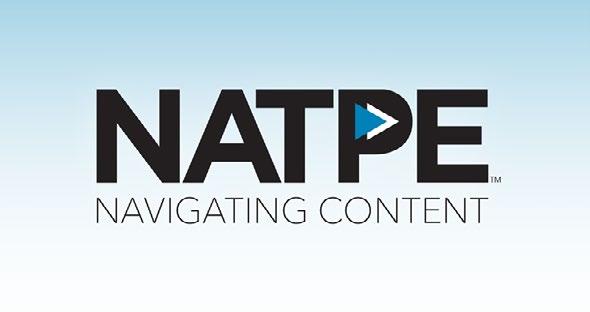 Tom Butts
Tom Butts
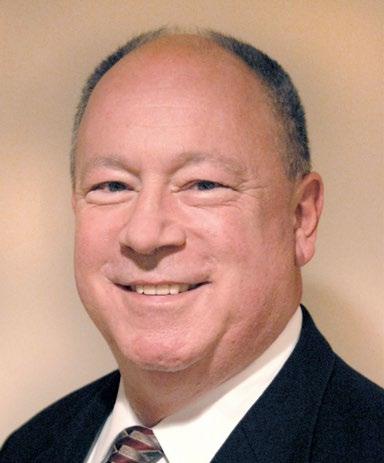
Even those mildly interested in the NFL have had to notice “Thursday Night Football” isn’t on NBC this year. While “Law & Order” and its many iterations, which the network now airs on Thursday night, draw a large audience of loyal fans, those dramas aren’t quite the same as a gridiron contest.
But in the context of football, there may be a bootleg play that can ensure “Thursday Night Football” returns for the long haul to broadcast.
No, I don’t mean “Sunday Night Football” on Thursday—the Rams vs. the Bills on Sept. 8, nor the Thanksgiving Day matchup between the Patriots and the Vikings. I mean the whole shebang as produced and streamed by Amazon Prime.
While this might be inconceivable in a traditional digital television world (aka ATSC 1.0), it starts to make sense in a NextGen TV era where content isn’t simply moving pictures and sound and what’s transmitted isn’t an MPEG-2 Transport Stream.
It occurred to me the other night when I tapped on my iPad’s Amazon Prime icon and selected “Thursday Night Football” that the return of the nationally televised game to broadcast isn’t an impossibility at all. Neither is it inconceivable that any other TV content, movie or special event with a large audience offered by an OTT service or FAST channel could also find a broadcast home.
For years, I have been concerned that sports leagues and college athletic conferences will whittle away at broadcasters’ TV rights as they roll out their own streaming services, and one day broadcasters would be on the outside looking at a lot of time to fill in their schedules where games once were telecast. The move of the Thursday night game to Amazon Prime seemed to me like a small, incremental step in that general direction.
But as “Thursday Night Football” popped onto the screen of my iPad, it dawned on me that broadcasters could have a major role to play in the future delivery of the IP packets that Amazon Prime
streams to carry the games, MLB streams as part of its MLB.TV service, Netflix uses to deliver “Stranger Things,” Hulu relies on to carry its lineup or the programming of any other established or emerging content provider that wishes to stream to viewers.
In an ATSC 3.0 world, broadcasters aren’t simply another source of TV content; they are the keepers of thousands of wireless data pipes designed specifically for robust delivery of IP packets. In other words, they can become a new purveyor of “last mile” data delivery service to the home.
I’ve always thought about the big data pipe of 3.0 in the context of wireless IP packet delivery for applications like navigation data and software updates to cars and trucks or even highly precise positioning data for agriculture and other applications.
While I’ve had fleeting thoughts about 3.0 being used to deliver streaming content in the past, there was something about “Thursday Night Football” accessed via Amazon Prime on my iPad that made it real to me like never before.
If broadcasters can stream IP packets reliably on a mass basis to the home and offer that service at a rate that is competitive to other last mile alternatives, why wouldn’t Amazon or any other OTT service or FAST channel at least consider 3.0 as a viable last-mile solution?
As I write this, Pearl TV has issued a press release on its new FastTrack program that aims to accelerate development and retail availability of low-cost HDMI 3.0 accessory receivers for the “91% of households that have displays with an HDMI input” but lack 3.0 reception. The program is intended to help “manufacturers interested in making devices that support the full NextGen TV service feature set.” One can only hope that includes the datacasting hooks to support last mile delivery of OTT content via 3.0.
At the risk of mixing metaphors, is it a slam dunk that “Thursday Night Football” will return to broadcast? Not at all. But it is at least a Hail Mary. l

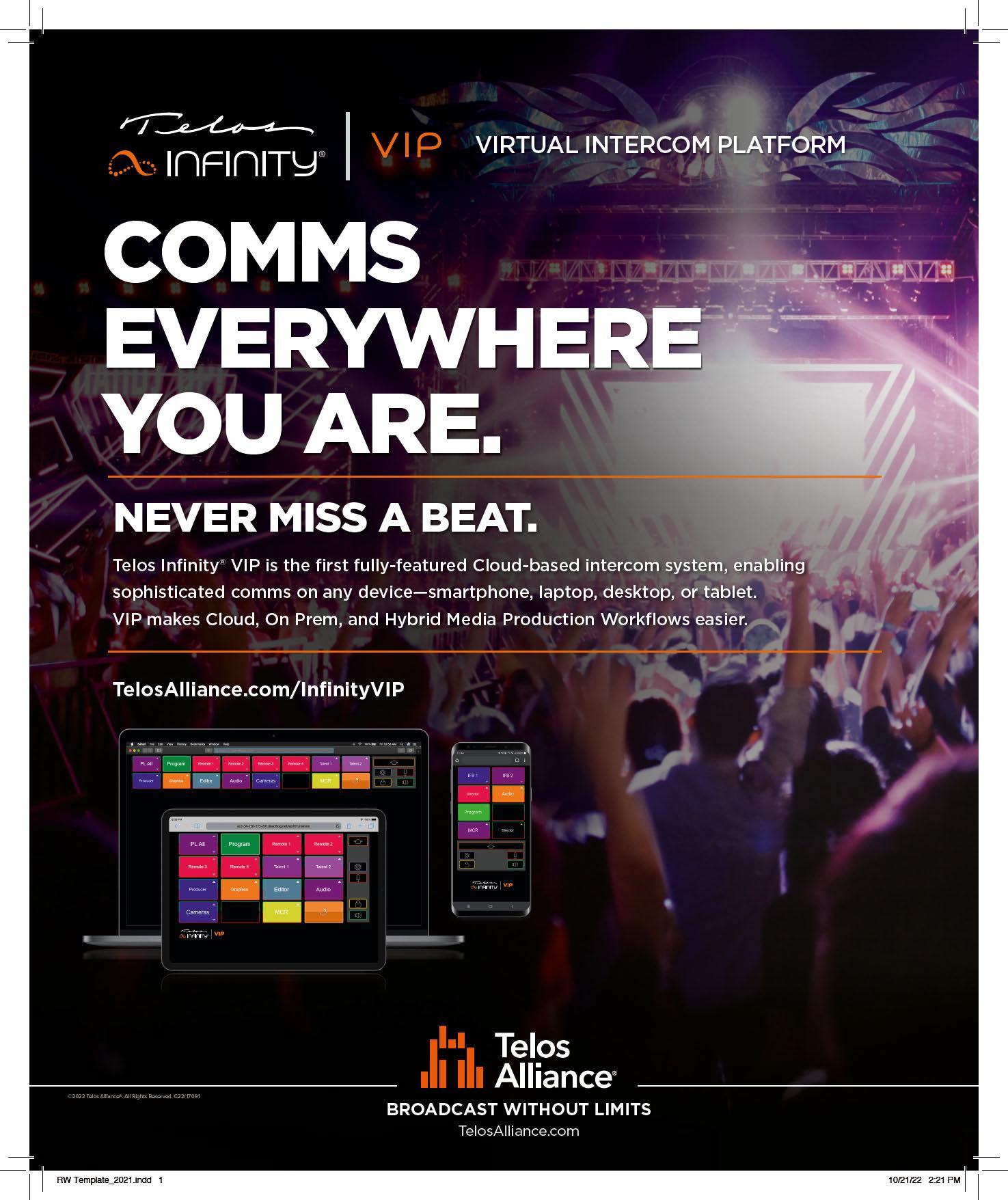

World’s largest sporting event expected to attract 5 billion viewers
By Mark R. SmithDOHA, QATAR—Imagine such a massive sporting event: Ten venues, including eight stadiums, all within a 45-minute radius. Sixty-four matches in just less than a month, plus a fan fest. And the potential for an audience of 5 billion viewers worldwide, according to the International Federation of Association Football.
That can only be the 2022 FIFA World Cup.
Fox Sports, the U.S. broadcaster for the event, will shoot and broadcast all matches in native 4K HDR, with studio programming to be upscaled from 1080p HDR to 4K HDR, according to Kevin Callahan, vice president

of field operations for the network. Domestic coverage begins Sunday, Nov. 20 and wraps up with the final, Dec. 18 at Lusail Stadium.
Fox Sports anticipates huge audiences will be focused on their screens of choice across Fox, FS1 and the Fox Sports app. That means Kevin Callahan, vice president of field operations for Fox Sports, and the 150-plusmember crew will be working within a huge production to meet bigger expectations.
In early October, Callahan and company were getting down to the nitty-gritty of the enormous undertaking, which started with building two nerve centers: The Fox transmission facility at the Qatar National Convention Centre, the home of the International Broadcast Center. The facility will accommodate more than 75 broadcasters.
“All of the broadcasters will have a presence there and their feeds will be shared between the countries,” Callahan said. “That means we’ll all get 40 feeds from every match,” he said, noting the Fox equipment roster that includes an EVS router, two Ross switchers, EVS servers, Grass Valley
“The Qataris have cooling technology that uses air pressure to push hot air out of each stadium to the point that you need a light jacket indoors when it’s sweltering outside.”
KEVIN CALLAHAN, FOX SPORTSUSA’s Gio Reyna (#11) takes a shot during US Mens National Teams 2022 FIFA World Cup Qualifier vs. Panama

Alchemists for image processing, Calrec audio consoles and a Riedel intercom system. “There is also a video sharing platform that will allow all of the broadcasters to tell the bigger story, rather than just their own,” Callahan added.
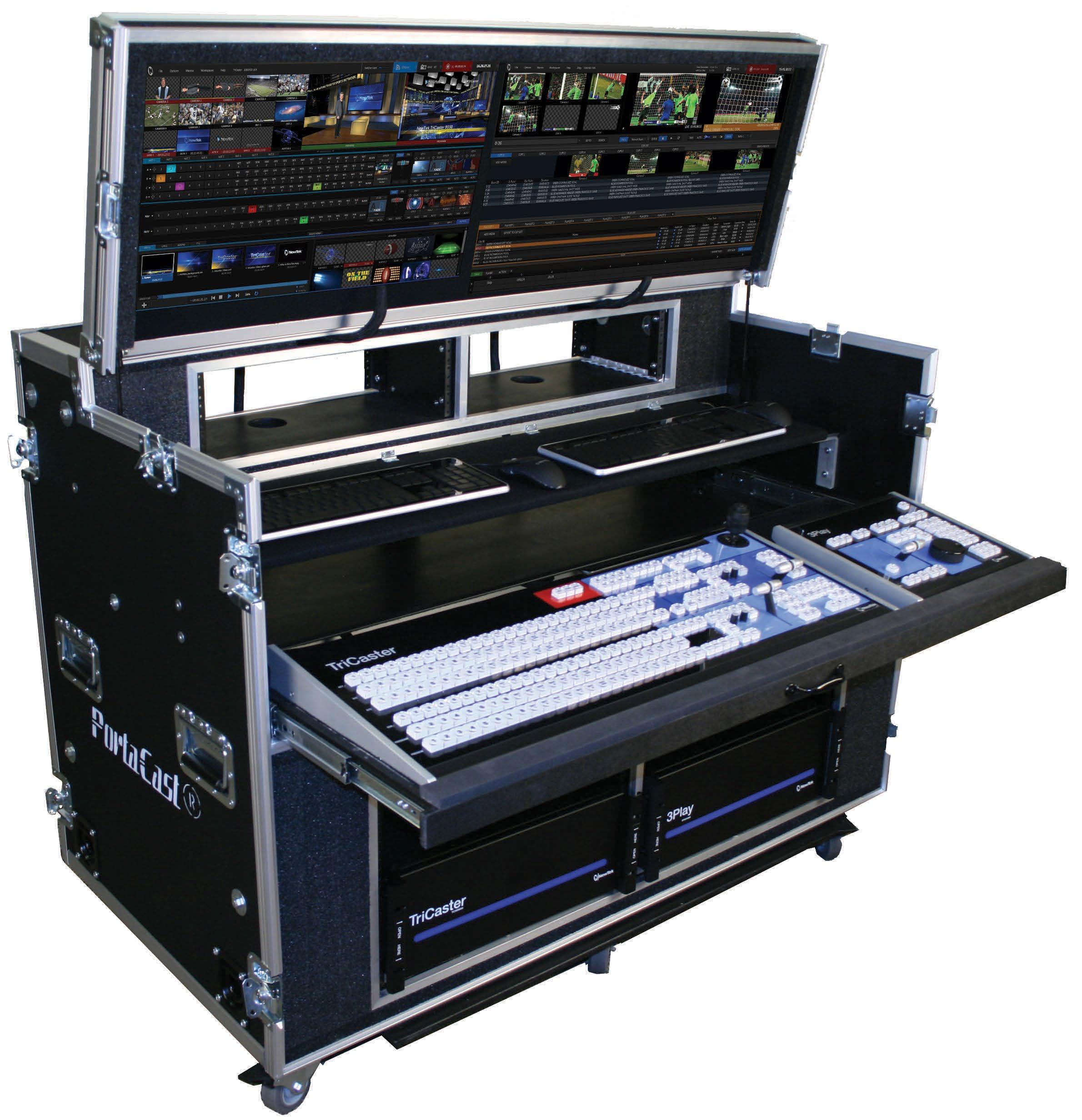
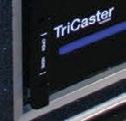


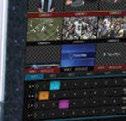

Fox’s other nerve center will be the Corniche Studio, its unilateral position. At press time, Callahan and Vice President of Studio Remote Operations Rod Conti were working with FIFA’s creative services team to acquire permission from the Qataris to build its broadcast center along the seven-meter Doha Bay waterfront promenade (aka the “Corniche”). It will include four sets for the various dayparts, including an all-LED demo field like that used during the network’s NFL coverage.
The stage is being constructed by Filmworks with the skeleton made of Mod Truss, a self-ballasting metal that will be incorporated due to the potential for high winds along the shoreline. Fox is also working with Creative Technologies to install 20 LED screens—six facing the crowd, seven Penta Center interior screens, one

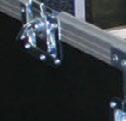
floor screen, four west stage header screens and two interior screens—for production purposes, as well as for messaging the fervent fans who queue up along the Corniche.


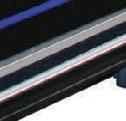




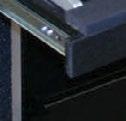


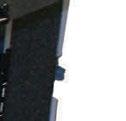

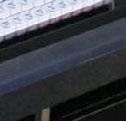









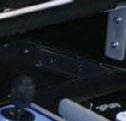

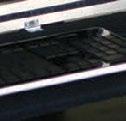
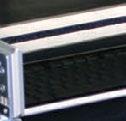
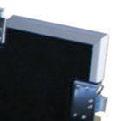
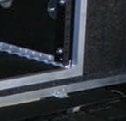



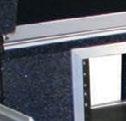

The purpose-built production facility will span 45x10 meters within two stories. It will house 18 Grass Valley LDX 150 cameras with Canon (20x5 and 14x4.3) lenses, GVG switcher, GVG Alchemist frame rate converters, an EVS video router, EVS replay servers and Calrec audio consoles. The mic roster includes 24 Sanken COS 11-Ds wireless mics via the Shure Axient.


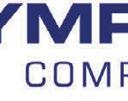

























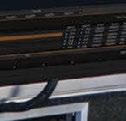





But one production element that won’t be seen in Doha is graphics equipment or artists. “They will remain at Fox headquarters in Los Angeles,” said Callahan,
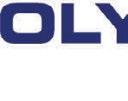



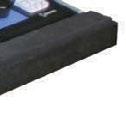
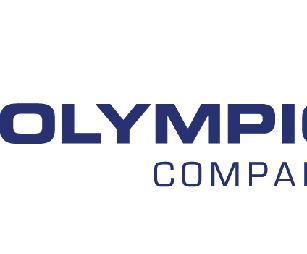
which is a change in general production at the network from the 2018 World Cup that was inspired by the pandemic.



Fox Sports is using Vizrt products extensively for its World Cup 2022 broadcasts, including multiple instances of Viz Engine and Viz Trio. The Fox team chose Viz Engine to help remove some of the complexity of its live graphics production and distribution, while Viz Trio, an advanced playout control application, allows Fox operators to control
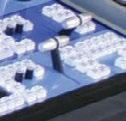

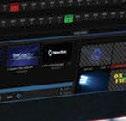



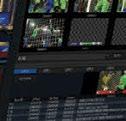
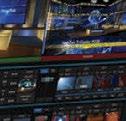

Credit: marca.com
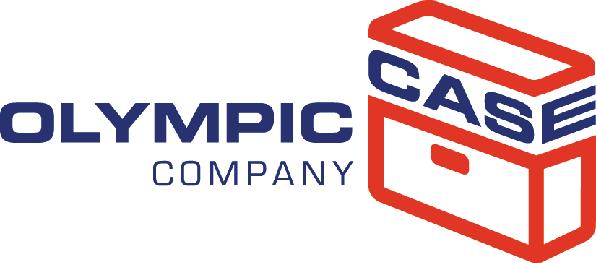
data-driven, real-time graphics.
Additionally, the network will use a complete NDI cloud workflow to help distribute live digital media from existing software applications, computing devices and networks from L.A. to Qatar. Using NDI is helping Fox avoid the cost of purchasing additional hardware and travelling with additional production personnel to Qatar.
Callahan said the 2022 broadcast will mark the first time a U.S. English language broadcaster has had an in-stadium presence at all eight match venues. “Our match crews are always travelling,” he said, “but in this case, no one will need to get on a plane.”

Within those venues, Host Broadcast Services will employ at least 40 cameras for each match. That means Fox will concentrate on side positions, using the Sony PXW-FX9s and VENICE 2s, using between two to six for each match. In addition, each venue will have its own Riedel intercom system.

In addition, the Fan Fest will be held in Al Bidda Park, where Fox will have a full live set on a 5x5-meter platform. Connections between all 10 venues and the IBC will require one gigabit of fiber “or more than 20 miles. The facilities are all IP,” Callahan said. Diversified Systems is building out 2110 IP-based flypacks for the spectacle and eight 100-GigE services will be used to transmit the signals back to the U.S.

Of course, building such a massive setup would be tough in any weather, but try doing it in a desert where the daily high temperature normally reaches the mid-90s and sometimes triple digits—and it’s not a dry heat, either. That fact has required a careful approach by the Fox crew.
“While we’re working outside at the Corniche, we’re on the night shift to ensure that we’re working safe,” said Callahan. “When the building is complete, we’ll add more than 80 tons of air conditioning equipment. That’s more than a large building in the U.S. would require.”
Then consider the venues. “Seven are new, save Khalifa International Stadium, and all will be repurposed after the World Cup,” Callahan said.
“The Qataris have cooling technology that uses air pressure to push hot air out of
each stadium,” he said, “to the point that you need a light jacket indoors when it’s sweltering outside.”
So, what’s the main difference between the World Cup and other major sporting events?
“It’s that we’re not the only broadcaster,” Callahan said, “so it’s not like the Super Bowl, where we have more influence. Here, we’re just one of many broadcasters from around the world, so we have to apply to FIFA for what we need and compete with the other broadcasters to get it.”
So for now, the sleeves are still rolled up and it’s back to work, because as the FIFA World Cup gets rolling, downtime is nil. “Another difference here is that we’re broadcasting 48 matches in the first 13 days, then 16 the last 16,” he said, “so the big push is upfront.
“So in that way, it’s like the Olympics,” Callahan said, “but it’s all soccer.” l
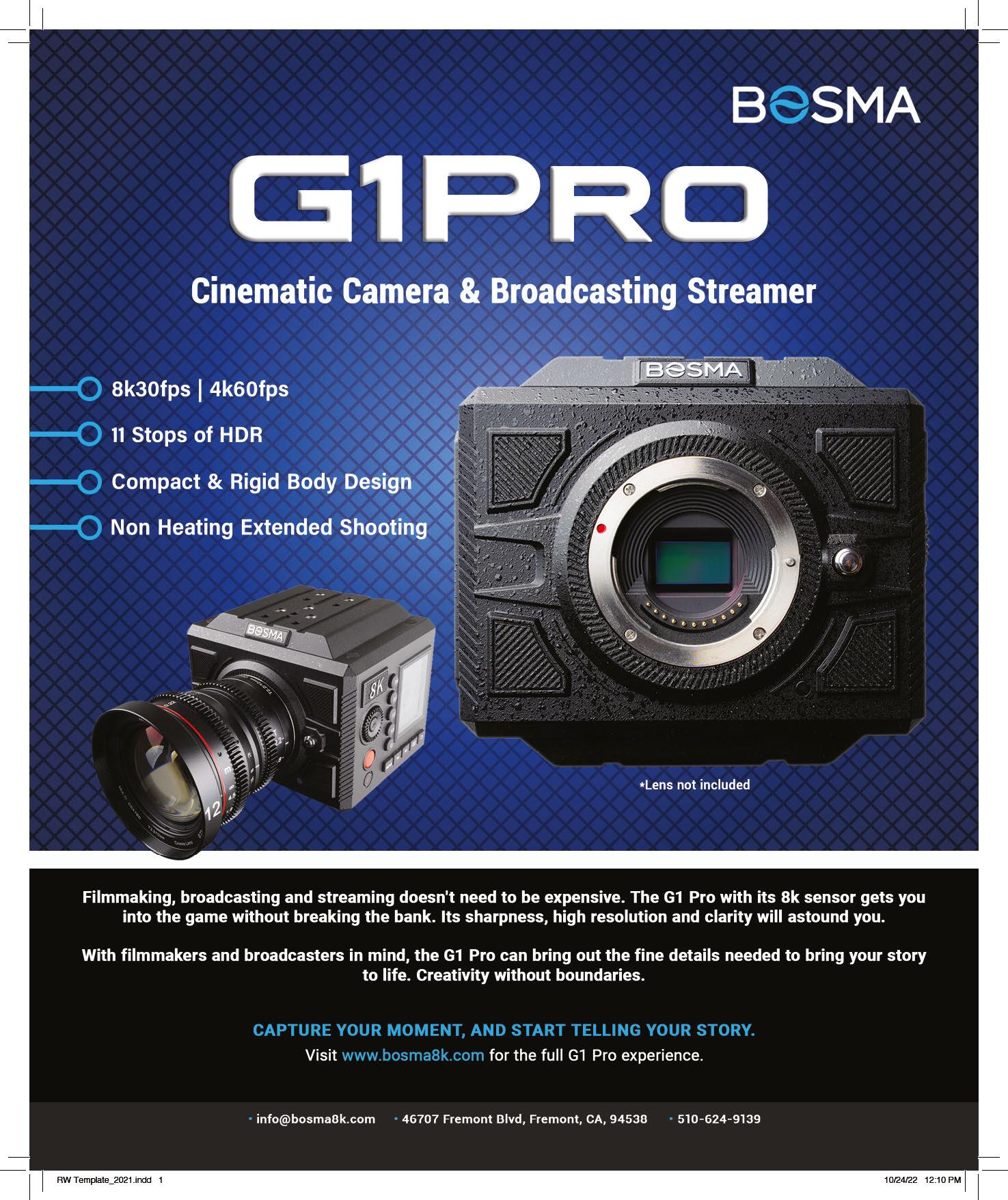
Open standards are behind the integration of the Imagine GamePlan ad decision and optimization engine and the Imagine AOS cloudnative sales technology platform, which can be used to target audiences across different impressions.
means ingesting orders from Imagine’s Game Plan ad decision and optimization engine from Operative’s cloud-native sales platform AOS, a partnership that enables a buyer to target audiences across different impressions—includ ing geographic location or device type—as well as process orders across all types of different platforms using Imagine inventory manage ment solutions.
”Our partnership with Operative enables our clients to streamline their operations across multiple media forms and to address the increasing desire to be able to sell on an audi ence basis,” said Tom Cotney, CEO of Imagine Communications.
Those types of partnerships highlight the importance of taking an audience-first ap proach to selling advertising. Since audiences are more fragmented than ever, there is less guarantee that buying a specific TV show will deliver the specific audience. This is where NextGen TV steps in. The technology can deliver this by relying on consumer-driven demand to keep local TV competitive with growing OTT platforms.
By Susan AshworthSAN FRANCISCO—As networks broadcast and stream a growing number of channels, the technology that controls everything from ad sales to traffic and billing is evolving as well. New tools and strategies abound for helping content creators handle the growth of those channels. And as the name implies, today’s broadcast management systems have expand ed and grown to offer content creators a better means of achieving that control.
The goals? As varied as the content itself: Re ducing operational complexity and costs. Sell ing advertising at a local and national level and on multiple platforms. Addressing HR issues. Automating order workflows. Identifying and executing audience-targeted orders at scale.
As the requests grow, broadcast manage ment systems have responded—some by build ing systems around a flexible, open source architecture; others by consolidating assets across a portfolio in an effort to respond more effectively to media buyers.
“The increase in channels has made it even
more critical to ensure that organizations have a flexible and adaptable BMS,” said Jimshade Chaudhari, senior vice president of product for Marketron. “Given the increase in channels and the associated content, manual processes and siloed systems can no longer meet broad caster’s needs. “

Earlier this year, two companies joined forces around the concept of standards-based platforms, open source architecture. For the Operative and Imagine Communications, that
“And while this will level the playing field by allowing local TV to meet their advertisers’ changing needs… creating a common currency between linear and all digital assets will make it easier for broadcasters to sell their multi platform ads,” Chaudhari said. “It’s important that modern BMS platforms recognize this and prepare broadcasters for this future.”
Over the past decade, broadcast management technology has steadily grown from standalone traffic and billing systems into integrated tools that manage content throughout its life cycle. That’s been a priority for companies like Myers, whose ProTrack software solution ProTrack centralizes content and allows users to acquire, schedule, monetize and distribute content from a single point of control.
Systems that were traditionally considered core traffic and billing are now expanding their systems with add-ons and built-in third-par ty technology integrations. ProTrack, which made its name in the traffic and billing space, now integrates with automation, accounts receivable and media asset management.
Myers provides broadcast management systems to the vast majority of PBS member stations across the country, a unique challenge since public media companies must meet all the same responsibilities as a commercial net work but with far fewer resources and revenue opportunities. Today, must-have features for networks like PBS now include automation log monitoring, schedule placement confirmation

and report generation.
Other systems strive to meet multiple goals while simultaneously prepping to handle multichannel environments. Advanced plan ning, rights and scheduling, spot placement technology and ad sales and commercial scheduling are part of Imagine’s Ad Tech product suite. Technologies like the compa ny’s LandmarkOSI traffic and billing system, Broadcast Master management suite for scheduling and finance or xG Linear scalable traffic for MVPD are designed to competently manage single or multichannel environments across multiple platforms.
Unifying station operations on a shared technology infrastructure is another key pri ority for broadcasters with multiple stations in multiple markets.
Large ownership groups are using WideOr bit’s WO Traffic system as a foundation to leverage new revenue streams by merging station operations on a single, collectively shared foundation. Like the infrastructure behind other traffic systems, WO Traffic inte grates with other suites like analytics, sales, payments and airtimes while WideOrbit Placer works to determine proper spot placement for all advertisers as well as simplifies billing.
That last piece was particularly import ant during the Covid-19 pandemic. Content creators needed to simplify the process of obtaining receivables, such as when religious broadcaster Bonneville International used the WideOrbit WO Payments Suite to help make decisions about clients who were struggling financially because of the pandemic.
“Because we have all the industry informa tion coming out of our WideOrbit system, [we looked at industries like] the entertainment or tourist industries [and could be] more flexible [about payments] because that’s an industry that [was] hit harder [by the pandemic],” said Ken Nate, CFO and executive vice president for Bonneville. “We think this creates an opportu nity for improvement down the road for both us and our clients.”
Managing resources was also the impetus behind a UK studio selecting a new media operations platform to manage everything from studio bookings to quote creation. A joint venture of Sky and NBCUniversal, Sky Studios Elstree is using the Xytech Media Operations Platform resource management software to help streamline the film and TV studio’s internal processes like cost management and resource scheduling.
That was also behind Viasat Broadcasting’s decision to turn to Xytech to manage staff and bookings for the network. With about 400
employees and 64 Viasat channels, the Euro pean TV operator needed an integrated system to manage and report on all operational and financial activities.
“Xytech software offers a multitude of fea tures when it comes to handling the complex requirements of bookings,” said Matt Waldock, Xytech vice president and director of business development for EMEA. “Our Media Operations Platform allows for quick and efficient quote and order creation. As bookings are added or changed, the system updates the display in real time, putting automated financial transparency directly into clients’ hands,” he added.
With the continued expansion of alter nate viewing platforms, local broadcast TV is changing the way viewers consume their content — which changes the way in which advertising has to be bought and sold. Broad casters looking to maximize their current core business must also effectively manage revenue that is now coming from OTT and third-party digital advertising.
As with other broadcast management sys tems, the Integration Suite from Marketron is designed to serve as a single ecosystem. Work ing with business platforms like Salesforce and NetSuite, the system can handle billing export features, digital advertising, social media veri fication and electronic sales orders.
The system works side by side with the Marketron REV sales platform, which ad dresses proposal creation, linear TV order entry and real-time data reporting leading to more revenue on every order via intelligent dynamic pricing and direct traffic integration, Chaudhari said. “All of this technology is built on an open platform that can be integrated into broadcasters existing systems via APIs, helping broadcasters augment their capa bilities without having to rip out their core infrastructure,” he said.
To demonstrate its efforts to accommodate an expanding array of advertisers, Marketron last month added new capabilities to its Mar ketron NXT digital ad platform that enable all broadcast and media companies to deliver digital ad solutions to advertisers operating in restricted industries, including cannabis, CBD, gambling, alcohol, fireworks and poli tics, thereby driving revenue from previously limited verticals.
As the market changes, so too must modern broadcast management systems — from aggre gating data to holistic business-level reporting to ensuring the right programming appears on the right channel.
“This level of flexibility prepares broadcast ers for continued success as advertiser and consumer demands evolve,” Chaudhari said. l

“The increase in channels has made it even more critical to ensure that organizations have a flexible and adaptable BMS.”
JIMSHADE CHAUDHARI, MARKETRONXytech recently launched its new Media Operations Platform, which provides one command center for all media, allowing broadcast and production teams to create and deliver content; orchestrate people, resources and facilities; and plan logistics.
ONTARIO—The broadcast industry is facing a human resource crisis as experienced engineers retire and potential new hires are more attracted to IT with higher pay. At the same time, underutilized workforce segments including women, people of color, and veterans offer a wealth of talent to the industry that has yet to be fully tapped.
These facts pose two key challenges to TV broadcasters large and small: How does the industry compete with IT to recruit new blood? And how can it attract a more diverse workforce that better reflects society?
There appear to be two reasons that broadcasters have trouble competing with the IT industry for new talent.
The first is money: IT pays more than TV. “Our number one, two and three problems are salary, salary, salary,” said Jim Ocon, president of Ocon Solutions (a product interface and integration company), and chairman of OConsortium (a group of independent companies focussing on cutting-edge media technology). “The challenge here is that broadcast TV engineers are not being paid at a par with what they can make in IT, at a time when our industry is becoming more IT-driven.”
According to the Society of Broadcast Engineers, which conducts an annual salary survey, the TV and Radio group has an average (all title and markets) of $89,630 with SBE Certification, and $93,242 with SBE Certification.
Those amounts are hard to compete with when IT companies can offer starting salaries as high
as in the low six figures.
“Compensation is obviously a powerful incentive when accepting a job,” said Andrea Cummis, CBT, SBE president. “It certainly is in the interest of the station owners to hire quality talent. Broadcasting is a technical industry. Qualified technical personnel ensure the facility and the operation will function at their maximum capability. Attracting and retaining qualified technical personnel is in the long-term interest of owners and operators.”
In a bid to address this problem, Gray Television recently boosted its minimum wage to $18 per hour company-wide on Oct. 1, 2022. Roughly 2,000 employees received a raise as a result of this new policy. Still, the best remedy to IT’s salary advantage is to match what they offer, or beat it.
The second reason is perception. Millennials and other prospective new hires see IT as “cool,” while broadcast TV— which they identify with their parents’ generation—is not. Ocon advises broadcasters to seek out those who are passionate about broadcasting at the earliest possible age.
“It’s like teaching; you need to recruit people who will enter the profession for the love of the job,” he said. “To find them,
broadcasters have to start early in middle and high schools, to educate students about what TV broadcasting is all about.”
The push to increase diversity and inclusion in broadcasting is more than morally just: It is also fiscally sound.
“As an industry we have been too reliant on new entrants coming automatically into our sector for a job, but now we need to heavily invest in reaching out and finding that diverse talent,” said Carrie Wootten, managing director of Rise, the global not-forprofit membership organization supporting gender diversity in the M&E tech sector.

“There is a severe skills crisis, a lack of diverse talent and a lack of a pipeline of talent coming into the industry,” she added. “The world is full of talented, inspiring and brilliant people—we just have to go out and get them.”
Rise is doing what it can to make this happen, with the backing of industry partners such as Blackmagic Design, BT Sport, Clear-Com, ITV, Sky and Warner Bros. Discovery and Singular.live. The group’s “Rise Up Academy” holds hands-on practical workshops, master classes and
summer schools to reach and encourage youth from lower socioeconomic and ethnically diverse communities to learn about broadcasting as a career path.
“Our goal in 2022 was to reach 2,000 young people and we will achieve this,” said Wootten. “In 2023, we are looking to expand our program of work internationally, working in Sydney, Singapore and the U.S. to reach 5,000 young people.”
“We are actively involved in both the Rise Academy and Rise Mentoring scheme,” said Mike Ward, Singular.live’s head of marketing. “We run a ‘Singular For Good’ program that gives away Pro-equivalent accounts completely free to educational institutions or nonprofits. We also make a watermarked version of Singular available to anyone for free, along with all our tutorials and training content so that anyone can learn our platform as a way to start their career in our industry.”
The National Association of Broadcasters’ Leadership Foundation spearheads efforts to promote diversity and inclusion through a range of initiatives, including the Broadcast Leadership Training (BLT) program, a 10-month executive MBA-style program for senior level broadcasters—particularly women or people of color—whose career goals are to become group executives or station owners; and the six-month Media Sales Academy fellowship program that prepares senior level college students and recent graduates for internships and entry-level media sales positions at broadcast stations. The NABLF also offers the Emerson Coleman Fellowship to increase diversity within the broadcast industry, and the six-month, paid Technology Apprenticeship Program to

for careers in the evolving media environment.
Veterans are yet another underutilized pool of talent.
Veterans-TV, a non-profit, nonpartisan organization provides hands-on TV production and post-production technical training to U.S. veterans and their families using the 53-foot “Denali Gold” OB Truck donated to VETV by NEP (see “Veteran’s TV Offers a Big Lesson for Living in These Times,” TV Tech, October, 2022).
Collectively, these efforts are really working to bring new blood into TV broadcasting.
train, inform and recruit a diverse technology workforce in broadcasting.

“Our mission is to provide overall leadership and guidance to the broadcasting industry,” said NABLF President and NAB Chief Diversity Officer Michelle Duke. “This means providing
leadership management tools, skills, training and resources to all broadcasters so that they can realize the benefits of making their workforces more diverse and inclusive.”
On a corporate basis, broadcasters such as Gray and WLBT-TV in Jackson, Miss., are
taking action to increase diversity and inclusion. Recently the two selected the first group of students who will participate in the Gray Media Training Center internship program. Funded at more than $1 million, the program will train Mississippi students at historically Black colleges and universities
“But we need to do more, and do it collectively across the whole industry,” said Wootten. “I chaired a panel at IBC and every representative said that the skills crisis is now impacting their bottom line. [So] we need to collaborate and work quickly. Otherwise the future looks very bleak indeed.” l
 Gray TV recently announced the participants in its first Media Training Center internship program.
Gray TV recently announced the participants in its first Media Training Center internship program.
LONDON—Playout has always been a crucial element in the broadcast distribution chain but it is becoming even moreso due to changing requirements and technological capabilities.
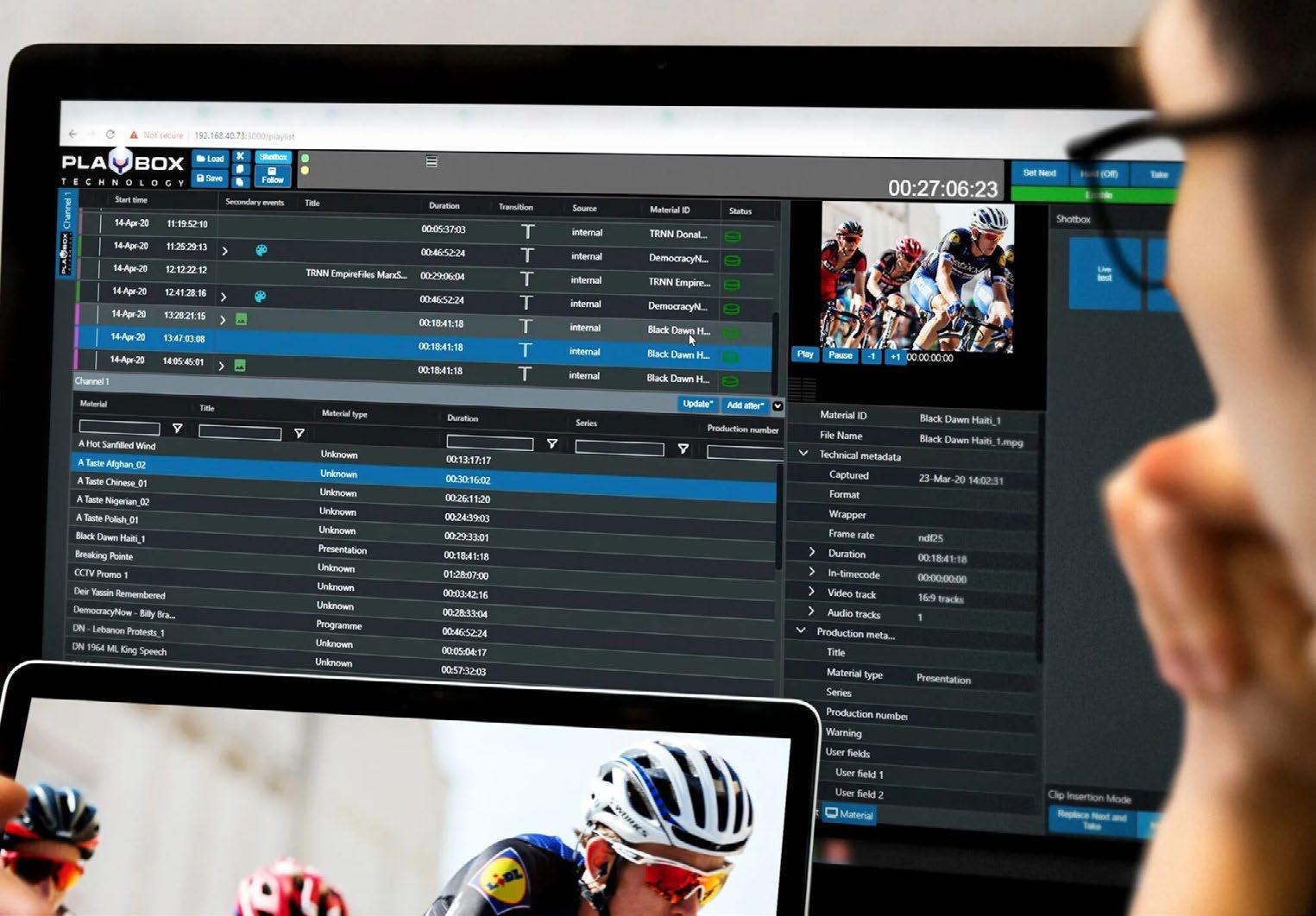
Broadcast technology developers like to talk in terms of evolution when it comes to advances in equipment and operational practices. The area of broadcasting that has perhaps evolved in the true sense of the word is playout. Over the years it has moved from being based on videotape—initially played out from banks of individual machines and then later automated carousels—within a broadcaster’s headquarters to third party facilities, with the further shift to file and server-based distribution.
That evolution has continued with the advent of the cloud, where files may be located outside the control center, with the most recent advancement being the further shift to remote or from-home working.
While the adoption of virtual techniques were largely foisted on the TV sector due to the Covid outbreak, they were already being used in some circumstances and were only going to become more widespread in the future. Covid, as with so many things, compelled broadcasters to bring their plans for this kind of implementation forward.
“Generally speaking, media companies are more comfortable following pandemicforced virtualized workforces with virtualized workflows,” said Rick Young, senior vice president and head of global products at LTN Global. “It feels like the industry jumped threeto-five years ahead in terms of location-agnostic production, playout and media management.”
Pre-pandemic, virtual playout was dominated by channels containing only pre-recorded, non-live programming. “That is not the case today, as channel creators are beginning to understand what is possible when mixing live and non-live programs,” Young said.
Young adds that audience tastes have also driven a change in how services are organized and presented, with a growing demand for
live and more targeted broadcasts. “This evolution is crucial as consumer expectations for FAST [free ad-supported streaming TV] and OTT platforms are trending towards live, regionalized and fresh content, not just a string of reruns delivered in a linear fashion.”
Mat Shell, head of sales at Pebble, acknowledges that the lockdowns and resulting shift to working from home increased the need for secure remote access to playout systems.
“System implementations obviously had to change,” he says. “The majority of broadcasters are still commissioning bare-metal systems as they contemplate their transitions to more flexible IP-based technologies, but regardless of whether it’s a playout solution deployed on premises or is virtualized or a mixture of both, what has driven the most change is the need to control those systems remotely in a secure way.”
Web-based monitoring and control systems enable broadcasters to run channels either within a traditional transmission control area or
from an outside location, which includes other premises or an operator’s home. As for other requirements, Shell says broadcasters are “likely to want their linear channels or playout facility” to feed any OTT platforms they operate.
“They may also wish for linear channels to feature on YouTube, complete with unique branding,” he says. “Broadcasters additionally want the ability for playout systems—both on the ground and virtualized—to cater for pop-up or event channels, specifically for OTT streaming.”
Streaming services, notably for VOD, were included under the general heading of “broadcast” but there was the impression that more conventional TV organizations with roots in the linear world still viewed their OTT rivals as being in a different category, both in terms of audiences and technology.
These two areas are now much closer together, particularly, observes Martin Whittaker, technical product director for MAM
and automation at Evertz, on the technical side.
“Both groups—broadcast and OTT, DTC [Direct to Consumer] and digital applications— want to create playout channels quickly and easily for the lowest cost possible and control/monitor these systems from anywhere,” he said. “This in turn generates the largest possible return on investment. Overall, customers are looking for systems that give them extreme flexibility, agility and adaptability to optimize content monetization for the lowest possible cost.”
While the market is still polarized, Sanjay Duda, chief operating officer at Planetcast Media Services, views the divide as being between big broadcasters with a large number of channels that feel responsible for delivering content and information to their viewers or subscribers; and “decentralized content generators” that distribute minority interest programming for a set period of time.
“As a playout operator, you need to be able to cater to both sides,” he said. “You have the long-term solutions on one side but you also need to have pop-up or niche channels.”
Another element in the playout equation,
Duda continues, is the commercial imperative, although this has to be considered in relation to technology.
“There’s a huge push towards how this is monetized, [which could be] by creating multiple feeds from the same playout for various platforms. Those are very important features as are being able to push in any last minute ads. In the U.S., FAST channels are taking the whole place by storm because it’s become a revenue-generating model where you create a stream and deliver it on to Smart TVs.”
At one time this kind of capability would have been delivered by highly sophisticated and complex equipment. Today, says Phillip Neighbour, COO at PlayBox Technology, broadcasters, content providers and facilities want simplicity, while also benefiting from the latest technologies. “They expect a high degree of automation, now supported by machine learning and artificial intelligence,” he said. “The whole system, from ingest to playout, has to be controlled from a single,
intuitive user interface that tells the operator when an action is needed but which generally handles everything to the planned schedule.”
All playout functionality, Neighbour explains, can now be implemented in software, with modern design principles utilizing microservices that can be combined as necessary to provide the required functionality for a particular channel.
“Channel-in-a-box is not a new concept,” he says, “although with modern software techniques it is extremely efficient and function-rich. Because of virtualization, broadcasters and media companies are rapidly moving towards channels without a box, either in data hubs in the machine room, a corporate or shared data center or in the public cloud.”
After a relatively long and steady progression, playout as a technology area appears to be going through an accelerated evolutionary period right now. Whether that slows or increases in pace appears to depend not only on the ambitions of broadcasters and streaming services but also the viewing habits of their audiences. l

Since NBCUniversal confirmed to The Wall Street Journal earlier this fall that it is considering ending its network programming at 10 p.m. and giving that hour back to its affiliates, speculation has been running rampant about the decline of network primetime programming.

I’m surprised by this reaction since this trend is nothing new and has been going on for a long time. It is part of a slow, gradual shift of scripted programming toward online streaming media from over-the-air primetime broadcasting. If NBC does cut back its prime time schedule—and it very well might—no decision will be made until next year.

Let’s use a little common sense here. The handwriting has long been on the wall for top-tier scripted programming on over-the-
air television. (Let’s be clear—this does not include live sports, events or late-night program ming, which will remain broad cast staples for the foreseeable future.) The burst of streaming media choices, however, was bound to put financial pressure on the networks’ primetime schedules.
Television began with only three networks competing among themselves in the 1950s. Now there are dozens of networks— many with very compelling programs. The competition for eyeballs is more ferocious than ever.
So, of course, costs are not only a concern for the broadcast networks, but also for highly competitive streaming outlets as well. Even NBCU’s Peacock, the network’s new streaming media arm, is ramping up its spending on new shows. That is bound to put pressure on the costs at the NBC on-air network.
The fact is there are some great shows being made today—perhaps the best in the history of the television medium. The prob lem is, to watch most of them requires much agility on the part of the viewer and fees to a range of streaming services. A lot of us do “free trials” to watch shows we want to see and then forget to cancel the service. I get it— that’s a clear business model for streaming services.
There is also the issue of commercials. Yes, network television is supposedly “free” (that’s another argument), but many of us now have developed an intolerance for commercial breaks. We got that from paid streaming me dia services, thank you.
Also, hybrid broadcast-internet late night shows have changed television. I can’t remember ever watching “The Late Show with Stephen Colbert” on a live feed; I always watch it the next day on the internet. All tele vision is fragmenting in different directions and that is part of the complications for the traditional over-the-air networks.
watching good, creatively produced tele vision programming, where we watch it is definitely changing. Broadcast network television is no longer the big dog in the viewing game.
“Networks are at an inflection point in terms of costs,” a broadcast veteran told Hollywood’s Deadline. “Live sports have emerged as the main driver going forward, and their high prices are putting pressure on costs for the rest of the lineup. The question is whether affiliates would like fewer hours of primetime network programming.”
I see the internet as a game-changer that will gradually erode over-the-air primetime broadcasting, especially if the best shows (and most costly) continue to move to pay services. There is only so much good programming and
NBCU, which owns 43 NBC and Telemundo affiliates, could see cutting its network prime time programming to enhance those local broadcasters. But again, what viewers want to watch in that late primetime hour will be determined by program quality and little else.
My guess is some affiliates will strike gold, while others will flounder. It all depends on the quality of the programming the station
puts in that hour.
ABC, owned by Disney, is mainly focused now on Disney+, ESPN+ and FX/Hulu. Recent ly, Disney moved its “Dancing with the Stars” to Disney+ after 17 years with the ABC net work. That’s a sure sign of changing priorities.
Though there is no change yet afoot at CBS, Fox has slimmed down its primetime lineup and altered its programming due to the Disney-Fox deal. Since the merger, Fox has mainly focused on sports, animation and non-scripted entertainment.
Of course, driving all broadcast primetime is advertising. That number has been reduced to the over-the-air networks from its high point of $70 billion several years ago. Five streaming services—Hulu, HBO Max, Discov ery+, Paramount and Peacock—accounted for 65% of online spending last year.
It should be noted that NBC, ABC and CBS are the only English-language broad cast networks that currently air shows at 10 p.m. each weeknight. Those shows are usually dramas. It also should be noted that each of the broadcasters has experienced primetime ratings declines over the past decade. Other networks that have reduced their primetime schedules over the years include The CW and Fox.

Television is transitioning very slowly, but it is clear that traditional broadcast networks are gradually being cut back in order to fund streaming. This trend is not new and contin ues at a steady pace.
The lesson is this: great programming will always have viewers. Where audiences watch it is constantly changing. l
Frank Beacham is a New York City-based writer and media producer.
The burst of streaming media choices was bound to put financial pressure on the networks’ primetime schedules.Why watch “The Late Show With Stephen Colbert”

Istarted writing RF Technology columns for TV Technology (now TV Tech) 31 years ago and this article represents my 300th column. In the 1980s, before starting my column I did some reviews on equipment such as a Leitch VITS inserter and the Abekas A42 still store. Given the timing, these may have appeared in Radio World magazine, before TV Technology became a publi cation.
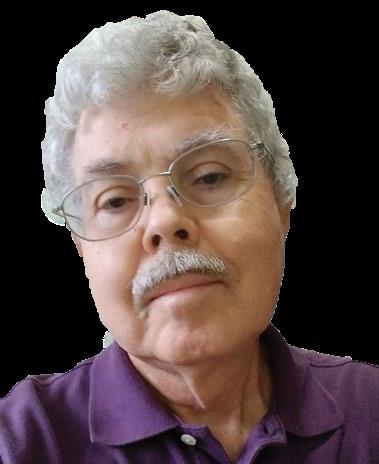
Those were done on a type writer, and I have no archive files. My report on building a Townsend CST transmitter from a kit of parts, delivered just as Townsend entered bankruptcy, was likely what prompt ed the editors of TV Technology to suggest I start a monthly column on RF technology back in 1991.
I took a look at my 200th column (actually my 201st column since one earlier column was so long the editors had me split it into two columns) to see what I was thinking about then. I’ll post a copy of it on my web site at www.transmitter.com. In that January 2010 article, I noted the decreasing number of viewers using antennas and the demand for spectrum for wireless carriers. I wrote: “I believe the future of over-the-air TV broad casting will be determined soon, probably within the next two years.”
The good news is over-the-air TV broad casting is still going strong 12 years later, in part helped by money broadcasters received as part of a spectrum auction that resulted in the transfer of 14 UHF-TV channels to wire less carriers and by viewers dropping cable TV. Those funds helped broadcasters upgrade their transmitters and antennas and prepare for the transition to the next-generation digital standard, ATSC 3.0.
Although I acknowledged then that solidstate transmitters were becoming viable options for UHF-TV transmitters up to 10 kW, I never imagined that only five years later I’d be ordering a 108-kW solid state Rohde and
Schwarz transmitter for installa tion at One World Trade Center.
The use of Doherty amplifiers allowed solid- state amplifiers to exceed the efficiency of the IOT (inductive output tube) ampli fiers and approach or exceed the system efficiency of MSDC (multi-stage depressed collector) IOT amplifiers. The move from tube-based transmitters and the transition from analog signal generation to signals created in the digital domain in FPGA’s and software-defined transmitters was perhaps the most significant technology change since I started writing for TV Technology.
THE FUTURE OF OVER-THE-AIR TV
Twelve years ago, I wondered about the fu ture of over-the-air TV. Based on the number of questions I receive about over-the-air TV reception and the growing number of sales and ads for TV antennas, I see a good future for over-the-air TV.
That isn’t to say there aren’t risks. Viewers are dropping their cable TV subscriptions in favor of streaming video over the internet.
Since local TV stations are not available for free online, this leads viewers to install antennas if they value local TV. If TV station owners decide to allow free streaming of their over-the-air programming, this could slow the adoption of antennas.
At some point, the number of viewers could drop to the point where maintaining a strong over-the-air signal or even dealing with the responsibilities the FCC places on TV licensees might not make sense if most of the audience was watching via the internet.
One thing broadcasters can do to pre serve over-the-air broadcasting is to make it easy to receive. The move from analog to digital helped as most viewers now get a perfect picture and a huge number of pro grams, often with something as simple as a $20 indoor antenna.
The transition to ATSC 3.0, with its more robust transmission options (including single frequency networks) should make reception easier. Broadcasting a compatible 5G signal could open access to cellphones and tablets. The ATSC 3.0 standard would allow transmit ting a signal in the ATSC 3.0 A/322 format to TV sets along with a 5G physical layer to cell phones and tablets using time domain or frequency domain multiplexing.
Qualcomm is developing chips that will allow reception of 5G broadcasts on UHFTV spectrum in cellphones. While it may be difficult to convince wireless carriers to allow this in devices they sell, broadcasting is still the most efficient way to deliver content to a huge number of viewers—there may be ways to encourage coverage through sharing ads and viewer data.
I strongly believe the success of ATSC 3.0 will depend on how easy it is to receive on the largest number of devices. If broadcasters make it too difficult for manufacturers to build ATSC 3.0 receivers or require view ers to go through extra steps to receive the signals, it will be tough to make the transition from ATSC 1.0 to ATSC 3.0. It is great to see companies like VBox and SiliconDust offering low-cost ATSC 3.0 receivers that will work with existing TV sets. I’m still waiting for a low-cost ATSC 3.0 USB dongle and wonder
if they will work with open-source software when they do become available. I follow open-source DTV software and device driver development on the linux-media mailing list and there is now little activity for ATSC 1.0 and none related to ATSC 3.0.
One of the challenges broadcasters face with ATSC 3.0 is the need to protect content from unauthorized distribution without hurting adoption of ATSC 3.0. Without this protection, program providers may be reluctant to offer their best content to broadcasters. Managing digital rights will be important. It shouldn’t be too difficult for manufacturers and software developers to have their devices and programs certified. Fortunately, since ATSC 3.0 is IP-based, the same protections viewers have gotten used to when viewing Netflix, Peacock, Hulu, Amazon Prime or other streaming services should work with ATSC 3.0.
If authentication and decryption can be handled in an existing browser or brows er plug-in, it should be easy to build and distribute low-cost ATSC 3.0 tuners that work with a qualified browser for displaying content. If broadcasters can match the expe rience people have with protected streaming content, content protection should not hin der ATSC 3.0 adoption on devices beyond TV sets. Even with content protection, I would expect most content to be available for free with minimal, if any, user registration requirements.
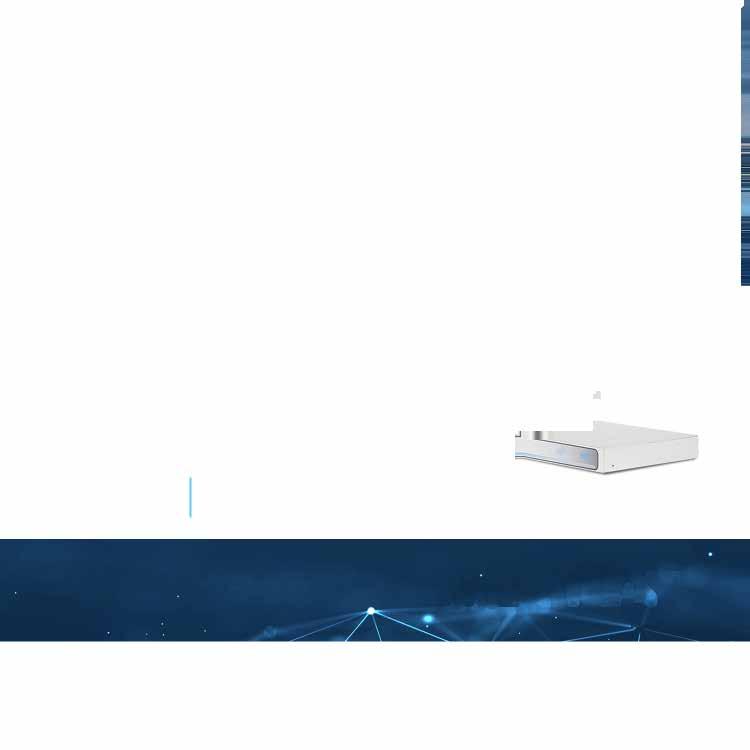
I’ll be describing developments with ATSC 3.0 and other RF technology topics in future columns.
The audience, and as a result, the content, of my columns has changed over the past thirty years. Past columns described simple,

easy-to-build remote controls using off-theshelf computer modules that when attached to a dial-up modem, allowed a simple way to monitor remote sites, particularly low-pow er and translator sites. I had tips on doing calormetric RF power measurements, the best way to aim microwave dishes, and tuning external cavity klystrons. I covered path-loss
calculations for microwave systems, RF expo sure calculations, and coverage predictions using open-source software. As the ATSC 3.0 standard was being developed, I wrote several articles on how the ATSC 3.0 physical layer works and how it differs from ATSC 1.0.
In recent years I found there is more inter est in receiving over-the-air TV, measuring signals, optimizing coverage and practical tips. This is partly due to the simplification of the transmission path. It is no longer nec essary to spend hours optimizing a transmit ter’s analog exciter and solid-state trans mitters don’t require tuning. With regards to tutorials, in the past 299 columns I’ve covered so many topics I have to be careful about repeating myself! Some are available by Googling “Doug Lung” and the topic. l
Many of the best ideas come from readers. I welcome your questions, comments and experiences. Let me know what you would like to see in future columns. Which topics have you found most useful? Would you like to see more indepth technical topics, less technical practical tips, basic tutorials like my last column, or “build-it” projects (both hardware and software)? Email me at dlung@transmitter.com.

When he's not building transmission systems, Doug's other passion is volcanos.
Panasonic Connect North America’s new AK-PLV100 35mm Cine Live Studio Camera is equipped with a large format, super 35mm Imager and PL Lens mount to accommodate cinema lenses for a shallow-depth look. The AK-PLV100 is a fully-enabled system camera, and is compati ble with the AK-HCU250 and AK-UCU600 camera control units, making it a companion to existing B4 mount camera systems. To capture cine matic video, simply swap the existing camera head with the AK-PLV100.

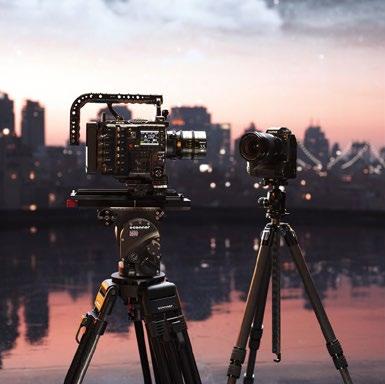
The camera also leverages Panasonic Connect’s expertise in IPbased live production—it outputs 12G-SDI signals from the camera head and can interface with return, control and other communications directly, or through ST 2110 when used without a CCU. For multicamera produc tions, the AK-PLV100 can also be used simultaneously with Panasonic’s new AW-UE160 PTZ camera to capture a variety of angles & shots.
z For more information, visit www.na.panasonic.com/us/audio-video-solutions.
New updates to Vegas Creative Soft ware’s Vegas Pro 20 include stability improvements and new features addressing color grading workflow, efficiencies and collaboration as well as the ability to zoom into the Video Preview window for a close-in look up to 2,000x magnification. New color correction tools and features include a Hue vs. Color Saturation Curve that enables users to define a hue or a hue range and adjust the saturation val ue of anything from the entire video to a specific hue in a video. The Color Picker for Color Curves feature allows users to sample a value or range of values in a video to which curve adjustments will be applied.

A new comment field for File Drop allows users to add messages, such as instructions or explanations, for collaborators invited to their File Drop session and the new 2,000x magnification feature of the Video Preview window allows users to home in on details of an object while working with the Bezier Masking tools or when you need to see the fine details of a color adjustment. z For more information, visit www.vegascreativesoftware.com/us.
disguise Cloud is a new suite of cloud-ready applications built to enable end-to-end remote collaboration across any M&E production.

disguise Cloud provides all the apps a team may need to store, preview and review high-reso lution media, tag content and leave comments on projects in the cloud, all on one platform. In addition to providing easy col laboration across time zones, disguise Cloud will soon also ensure media files can be shared more securely with support for built-in passphrase protection, multi-factor authentication, expiration links and watermarking.
The Cloud platform offers a unified disguise login, enabling one-click access to all of disguise’s cloud services as well as disguise Designer soft ware, the ultimate software to visualize, design and sequence projects from concept to showtime. Also new is disguise Drive, a web-based storage space which allows teams to upload and review all their project media securely.
z For more information, visit www.disguise.one/cloud.
Adobe announced a significant expansion of the collaboration tools in the Adobe Creative Cloud and Document Cloud during its Adobe Max event last month. During the event, Adobe previewed a new Camera to Cloud integrations built into RED Digital Cinema’s V-RAPTOR and V-RAPTOR XL camera sys tems and Fujifilm’s X-H25 mirrorless digital cameras to enable collaborative production workflows. Adobe Camera to Cloud is used by more than 5,000 productions. Powered by Framie.io, it has fueled a transition from external drives to cloud-based camera workflows. With Adobe Camera to Cloud, media is automatically transferred from the production set to the cloud so post-production teams can start work immediately on footage.
The newly announced integrations streamline the process further by transferring media directly from cameras to organized Frame.io folder structures without the need for intermediate devices.
z For more information, visit www.adobe.com/creativecloud/.video.html.
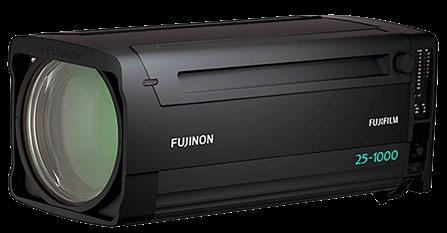
The HZK25-1000mm box-type broadcast dual-format zoom lens offers support for two types of large image sensors. It can be mounted on cam eras equipped with the Super 35mm sensor or the larger sensor equivalent to 35mm full frame. The lens achieves optical performance that exceeds 4K and also facilitates the use of cinema cameras, which is becoming more common in broadcast. It enables cinematic visual expression, such as shallow depth-of-field for beautiful bokeh in live coverage of sporting events and music concerts.
The new broadcast zoom lens normally works with the Super 35mm sensor but also supports a sensor equivalent to 35mm full frame when a built-in image expander is activated, which increases the image circle 1.5x. It offers the added benefit of maintaining the same angle of view with both sensors. For wide angle, the lens provides F2.8 aperture, enabling cine matographic visual expressions with shallow depth-of-field and resulting beautiful bokeh.
z For more information, visit www.fujifilm.com.

Marketron has added new capabilities to the Marketron NXT digital ad platform that enable all broadcast and media companies to deliver digital ad solutions to adver tisers operating in restricted industries, including cannabis, CBD, gambling, alcohol, fireworks and politics, thereby driving revenue from previously limited verticals.
Traditional media companies have faced difficulties deriving revenue from ad dollars available from these sectors due to regulations. Market ron NXT customers can now help advertisers in these categories find audiences through safe and responsible digital ad tactics. Marketron NXT makes it possible to run restricted category campaigns and other third-party digital tactics on the same platform.
z For more information visit www.marketron.com/marketronnxt
Building on the acquisition of cap tioning company VITAC in 2021, Verbit has announced the release of an asyet-unnamed automatic captioning system with hybrid capabilities that is based on ASR technology.
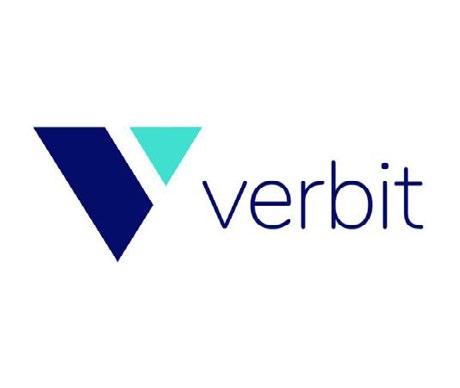
The new product is a customized, adaptable engine developed with input from captioning, speech and machine-learning experts and includes features such as profession al data prep by specialists who research and review content added to the ASR engine before each session starts. Clients are given the option to request a so-called “human co-pilot” for control of a live ASR session in real time, which provides support in corrections, custom caption placement and domain changes.
z For additional information visit www.verbit.ai
Magewell’s new Ultra Encode AIO builds on the company’s original Ultra Encode models with expanded features including HDMI and SDI input connectivity in a single unit; 4K encoding and streaming from the HDMI input; simultaneous multiprotocol streaming; higher streaming bitrates; and file recording. Ultra Encode AIO supports multiple video encoding formats and an array of delivery protocols including RTMP, RTMPS, SRT, RTSP, RTP, HLS, and TVU’s ISSP technology. Video can be encoded at resolutions up to 4096x2160 at 30 frames per second from HDMI sources, or up to 1080p HD at 60 fps from the device’s 3G-SDI input.
z For additional information visit www.magewell.com
Bitcentral has expanded its partnership with OCTO PUS Newsroom by making the Octopus 11 newsroom computer system available to Bitcentral customers.

Octopus 11 enables users to be more productive thanks to a revamped user interface, native de vice support for PC, Mac OS, iOS and Android and advanced newsgathering, planning and collaboration tools. Launched earlier this year, Octopus 11 facilitates editorial collaboration among team members at every stage of the production process. It enables station newsrooms with the flexibility to collaborate, produce rundowns, create scripts, share videos and post to social media in one system.
By being fully compatible with Bitcentral’s Core News products, Octopus 11 offers modern news technology solutions that will enable Bitcentral’s customers to manage the entire lifecycle of live and pre-re corded content.
z For additional information visit www.bitcentral.com.

VidOvation has launched a new Tech nology-as-a-Service (TaaS) offering that will allow qualified customers access to any product line VidOva tion carries—including top sellers like Haivision/AVIWEST, Vislink, CyanView, MultiDyne, and IP television distribution and signage systems—through monthly payments over a 36-month or 60-month subscription term.
The TaaS offering includes everything customers can see in a traditional solution, including installation, hardware, software, full-term maintenance, and obsolescence protection, without upfront costs. “Customers who use the new TaaS offering no longer need to worry about getting locked into the wrong technology or being forced to divert a large portion of their budgets away from other necessary busi ness expenses,” said Jim Jachetta, executive vice president and chief technology officer, VidOvation.
z For additional information visit www.vidovation.com/taas

Sencore Impulse 400D 4K UHD Receiver/Decoder is a 1RU receiver/ decoder with an expanded port selection boasting multiple ASI inputs/ outputs, dual SDI outputs, DVB-S/S2/S2X dual satellite tuners, and more. Additional capabilities include input failover, enhanced multiplex ing, and API/SNMP integration options.

The Impulse 400D 4K UHD receiver/ decoder/gate way supports MPEG-2/ H.264/H.265/ AVS+/AVS2 UHD/HD/SD video and all major audio codecs. With its vast array of RF and IP input options, the Impulse 400D is the ideal commercial TV solution for RF signal reception, program descrambling, multiplexing, downscaling and decoding.
z For additional information visit www.sencore.com
PTZOptics’s first camera in its new Move series features SDI, HDMI, USB, and IP output, and comes native with NDI|HX for unparalleled perfor mance and versatility. It supports 4K at 60fps (1080p at 60fps over SDI) and features a built-in tally light. Move also offers built-in auto-tracking capabilities — no need to run software on another computer — freeing teams of the need for a camera operator. With 12x and 20x optical zoom available, Move can fit seamlessly into any production scenario.


In addition to Move’s auto-tracking features, users will also have ac cess to PTZOptics’ latest Web UI—updated to provide everything users need in one simple menu. Almost every feature in the Web UI has a tutorial function, perfect for novice producers navigating the settings for the first time.
z For additional information visit www.ptzoptics.com/move-4k
AMHERST, N.Y.—FlexScreen created the world’s first flexible window screen and when we made our first foray into marketing, we started with an iPhone and social media. Fast forward nine years, and our push into market ing has been so successful that we went from being just a flexible window screen company to acquiring Reflex Brands, a digital market ing agency.
We now support digital advertising, two podcasts, live streaming, a live production and recording studio and in-the-field filming for customers and commercials. Due to Reflex Brands’ marketing efforts, FlexScreen even caught the eye of ABC’s business reality TV show “Shark Tank” and was featured on season 11.
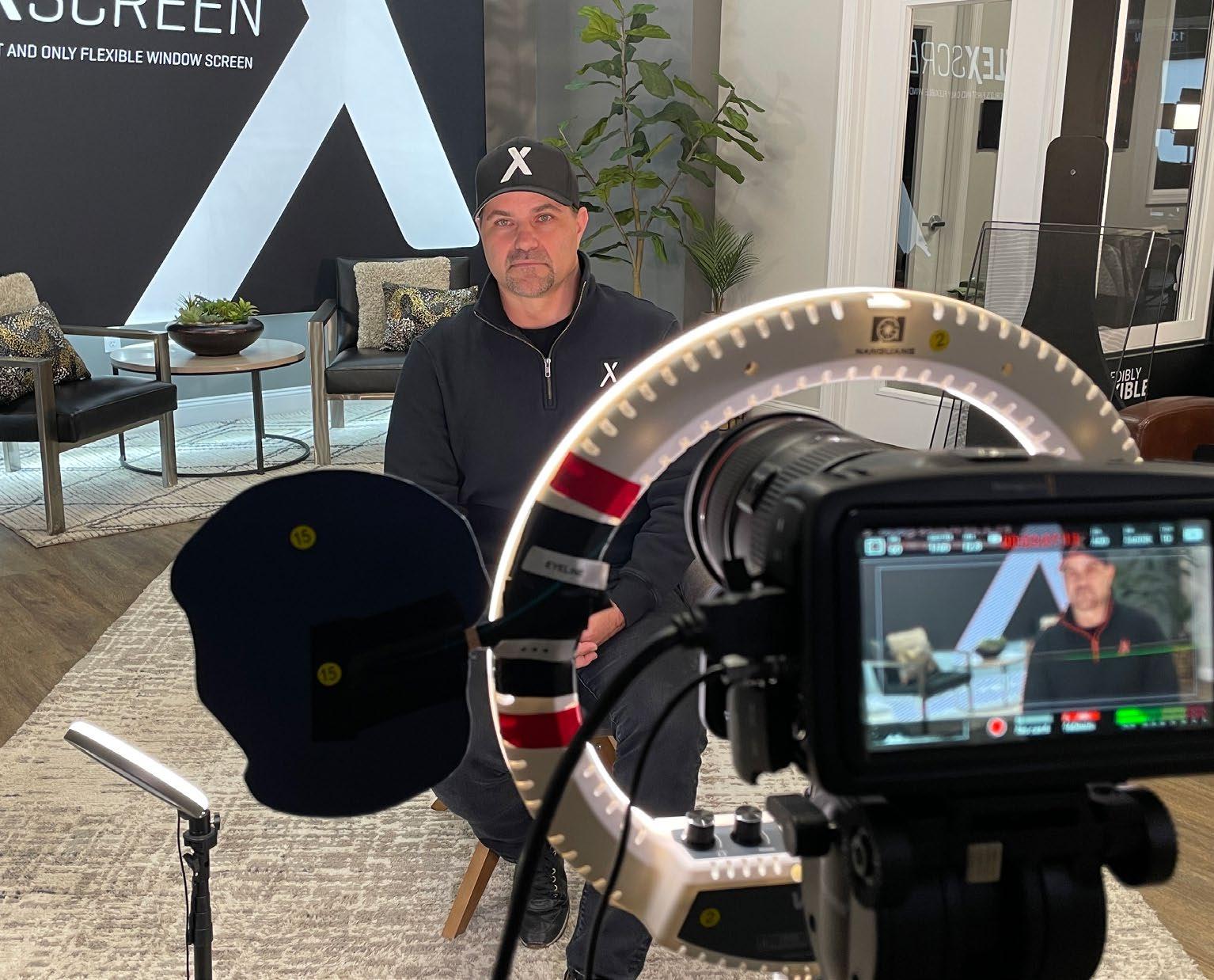
All our work is supported by a full-blown professional video production workflow that includes Blackmagic Pocket Cinema Camera 6K Pros, Video Assist 12G HDR monitor/re corders, several models of ATEM switchers, HyperDeck Studio HD Mini recorders, a Smart Videohub 40x40 router, Blackmagic Web Presenter HD streaming solutions, DeckLink and UltraStudio for capture and playback and a multitude of converters.
With this type of exponential growth came the need for workflow expansion, and as we expanded our workflow, we were able to grow our offerings. Now our gear affords FlexScreen and Reflex Brands’ live produc tion, streaming, content creation and post workflows.
As your workflow grows, so must your at tention to detail, and it was important for us to incorporate tools that took the guesswork out of certain aspects, so we could create the best possible content. A big detail was signal monitoring, for which we rely on two Blackmagic SmartScope Duo 4K monitors. We purchased them because we needed a simple way to view and manage everything going on in our studio.
With two 8-inch LCD screens, the Smart Scope Duo 4K includes built-in waveform, vectorscope, RGB parade, YUV parade, histo gram, audio phase and level scopes. Because the screens are independent, we can display a combination of scope and picture views.
Physically, our SmartScope Duo 4Ks sit inside of our travel racks, as well as in our studio’s control room. We use them when we are checking audio levels, then switch to mul tiple camera shots to check color, exposure, and the angle. We especially rely on waveform monitoring and love this feature because it gives us real-time data and information about what’s going on during our live streams or recordings, adding that extra layer of confi dence and attention to detail.
The SmartScope Duo 4Ks provide all sorts of different, easily accessible data in one unit, streamlining our workflow and saving costs, whereas previously we had to invest in multi
ple devices just to view everything we needed.
It may seem like a simple thing, but truly as you grow your workflow, you also must pay more attention to the minor details to make sure things run as smoothly and efficiently as possible. Because we trust the quality of Blackmagic Design, we knew the SmartScope Duo 4K was going to perform and fulfill our needs. l
Nicolas DeSarno is director of Reflex Brands and project manager at FlexScreen. With a background in videography, he now travels around the country teaching clients how to grow their own brands through social media marketing. He can be reached at 724-576-2007 (Reflex Brands) or 888-983-3539 (FlexScreen) or nicolasdesarno@reflexbrands.com.
For more information, contact Blackmagic Design at 408-954-0500 or visit www.black magicdesign.com.
For more information, visit .reflexbrands. com and www.flexscreen.com.
Digital Nirvana’s MonitorIQ RM is a cost-effective video monitoring solution for remote hub and headend sites. The system addresses the critical need among video distributors to replace the antiquated Slingbox and obsolete Volicon RPM solutions, which provided remote video moni toring at the edge. MonitorIQ RM is designed to monitor huge numbers of individual locations quickly, so cable operators and other video distributors can monitor hundreds of servers across a large geographic area to verify ad inser tion, signal quality, service delivery, and proper programming placement at the local level—all from one or many central locations.
z For more information visit www.digital-nirvana.com.
The Witbox+ packs Witbe’s automated testing and monitoring technology into a powerful yet compact testing device designed to help video service provid ers boost their testing and monitoring capabilities and improve users’ quality of experience. Users can plug any device into a Witbox+—including set-top boxes, mobile phones, gaming consoles, and smart TVs— and automatically test and monitor any video service running on it. Witbox+ allows users to test and monitor up to four 4K de vices simultaneously using the company’s unique video-quality algorithms.
z For more information visit www.witbe.net
JVC Professional’s DT-U31U is a multi-in terface 4K HDR monitor designed for broadcast centers, production trucks and studios. It offers a native 4K panel (3840x2160) with a contrast ratio of 3000to-1, and boasts multiple 4K interfaces, such as 12G-SDI, 3G-SDI and HDMI 2.0, as well as video-over-IP, HLG-HDR and PQHDR capability. For accurate monitoring, built-in 3D LUT auto calibration, De-log LUTs, and gamma preset selection are available. Additionally, the DT-U31U offers TSL 3.1 and 4.0 UMD support, as well as frame/field view selection. Displays for SDI timecode, on-screen TALLY, focus assist and waveform/vector/histogram are also standard. With its long list of high-end production elements, the DT-U31U is an ideal workhorse for professional video monitoring.

z For more information visit www.pro.jvc.com.

Sony’s PVM-X series of 4K HDR monitors, available in 18-, 24- and 32-inch sizes, are now available with a free v4.0 firmware update. Key highlights include closed captioning support; HD-SDI input; EIA/CEA-708 service 1 to 6; EIA/ CEA-608 (CC1 to 4 and TEXT1 to 4) over EIA/ CEA-708; support for 720/60P and 1080/60i over HD-SDI, and support for new upgrade license configurations. The PVML-SCX1 is a signal conversion output license with a 3D LUT baked output feature for Sony’s TRIMASTER high-grade picture monitors that includes 4KHD downconvert; 1080P to 1080i conversion; processed output from EMO. The PVML-TDX1 3D LUT baked output license includes: LUT Processed output from EMO; support for audio and timecode output via the Enhanced Monitor Output (with PVML upgrade license); in Monitor Display (IMD); Grid Display; chroma Up to assist in camera setup and Parallel Remote
z For more information visit www.pro.sony/ue_US.
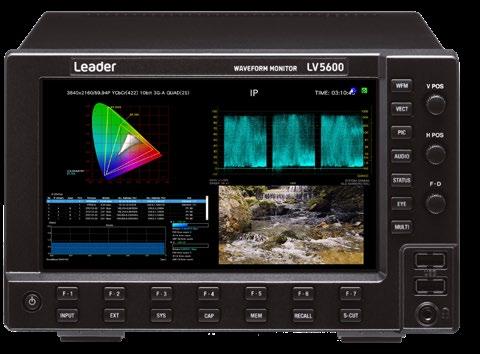


PRISMON is designed to be a versatile soft ware-based solution for monitoring and multi viewing of A/V content that allows broadcast and media service providers to successfully deal with a heterogeneous world of ever-grow ing standards and formats for media content transport, where encoding, flexibility and cost are winning factors. It is built as a software appliance on COTS hardware that connects over standards-based IP as well as SDI. It supports UHD for both inputs and displays and delivers industry-leading low latency. The software archi tecture means that multiple PRISMON displays can be networked. Each individual PiP is created just once and shared as necessary across the network, minimizing the demands on bandwidth and giving users immediate flexibility in configur ing and managing large numbers of displays.
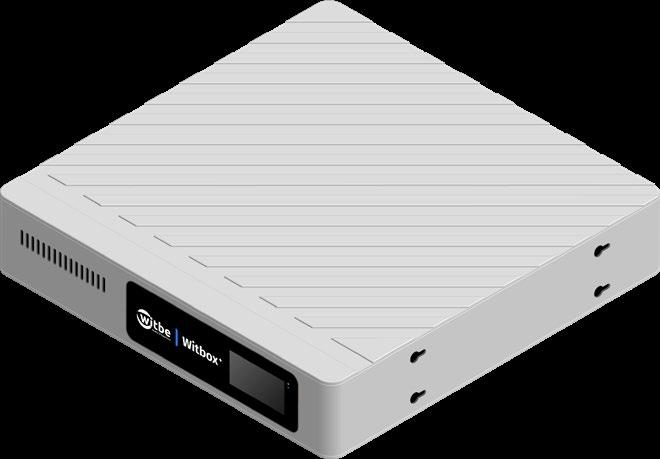
z For more information visit www.rohde-schwarz.com.
Leader’s ZEN Series LV5600 is a mains-powered SDI/IP waveform monitor in a half-rack width 3U desktop chassis with a touchscreen front-panel display. It provides all the facilities needed to monitor UHD/HD/SD SDI as well as video-over-IP signals seamlessly in a hybrid workflow. Features including test-pattern generation, eye-pattern display, closed-caption moni toring, CIE color-chart, HDR measurement, focus-assist, customizable screen layout, tally interface, 4K/UHD operation, 10G IP input and 12G-SDI interfaces, plus Leader’s intuitive CINEZONE and CINELITE. Major functions include waveform, vector, picture and audio, which can be directly accessed via push buttons or plug-in mouse. SMPTE 2022-6, SMPTE 2022-7 and SMPTE 2110 protocols are all supported. The 1U LV7600 rasterizer offers similar capabilities minus the front panel display.
For more details visit www.leader.co.jp/en.
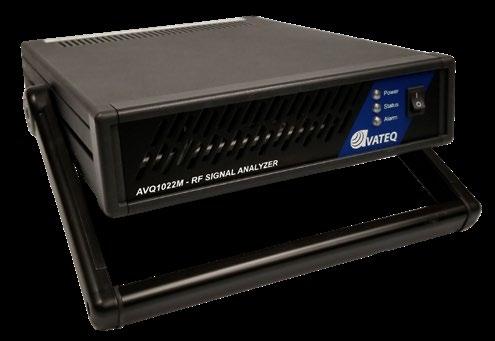
Based on ActiveCore Platform, AVQ1022 (2nd Gen) ActiveCore RF Signal Analyzer and Monitor ing Receiver is an embedded RF layer monitoring receiver and signal analyzer for digital terrestrial standards. It offers in-Band interference detec tion and visualization; a comprehensive set of analyzed parameters and plots; a rich selection of tools for remote monitoring; transport Stream output (HTTP); ATSC 3.0 STLTP and selected service output (HTTP). It has been designed as a solution for remote monitoring digital transmit ter system performance and transmitted signal quality, ensuring consistent Quality of Service of the network. It features an alarm system that can be accessed via multiple interfaces and be set up to control the main components of the transmitter system in case of an emergency.
z For more information visit www.avateq. com/ avq1022-rf-signal-analyzer.php.
Marshall Electronics’ V-702W dual 7-inch rackmount monitor with waveform, vector scope and other analytic display modes, supports multiple Log and HDR modes. The V-702W monitor is the flagship of the series, which also includes the ML-702 (dual), ML-503 (triple) and ML-454 (quad) models. This series of monitors is the right choice for system designers, as it boasts a very compact, slim chassis, bright screens, and wide viewing angles. Additionally, it is designed with titling rackmounts, which allows for flexible mounting options. The line also features loop-through inputs eliminating signal routing limitations. Its intuitive front panel controls plus Ethernet capability mean that basic functions can be performed without a computer.

z For more information visit www.marshall-usa.com.
The SmallHD Vision Series offers ref erence-grade 4K HDR monitoring in a rugged package. Purpose-built for 4K HDR viewing on set and in post-produc tion, Vision Series 17-inch and 24-inch screens deliver color reproduction with extreme contrast, infinite blacks and pristine highlights. Designed to be an endto-end 4K HDR workflow solution, Vision Series is engineered to equal modern sensors’ increased sensitivity to highlight and lowlight image reproduction, so users see every camera detail recorded. Pro prietary Full-Array Local Dimming (FALD) hardware enables nuanced control of over 2,100 individual LED zones, rendering hyper-sharp contrasts with deep blacks, crisp highlights, and 10-bit color depth. .
z For more details visit www.smallhd. com.
Ikegami’s HQLM-3120W is a 31-inch 4K broadcast refer ence monitor for use in broadcast production studios, post suites, MCRs and playout centers. It employs an LED-illuminated 31.1 inch pixel LCD panel with full 4096x2160 resolution and 10-bit processing depth. The display has wide horizontal and vertical viewing angles (up to 178 degrees) plus high-contrast ratio (1450:1) and wide color gamut, meeting the ITU-R BT.2020 standard specified for broadcast-quality UHD program production and international distribution. The monitor supports HDR with menu selection of a range of HDR formats including HLG. In addition, the HQLM-3120W is equipped with waveform, vectorscope, vertical-interval timecode, and eight channel SDI-embedded audio level displays as well as closed-caption subtitles.
z For more information visit www.ikegami.com/.

DASDEC-III is the third generation of DAS’S award-winning DASDEC flexible emergency messaging platform, which comes equipped with the DASDEC v5 software, and is designed for traditional broadcast radio and TV, including the latest NextGen TV, CATV, IPTV, campus, industrial, and emergency operation centers. DASDEC-III also combines all the features of the previous DASDEC series, plus capabilities that were once only available in the company’s One-Net products, originally sold to cable and IPTV operators. With DASDEC-III, the company has unified the two product families — DASDEC and One-Net — into a single product line. The DASDEC-III also has a more modular design, allowing for even more hardware and software customization to create tailored solutions for different messaging requirements.
z For more information visit www.digitalalertsystems.com.
Suitable for on-set video and post-pro duction facilities, Canon’s DP-V2730 is a professional reference monitor that delivers high-end 4K HDR performance for filmmakers and broadcasters. The DP-V2730 has a 27-inch screen to achieve high brightness with minimal noise, and is a great companion for virtual post-pro duction editing, VFX, and color grading. To help post-production houses transition into using HDR, Canon designed HDR monitoring functions like a waveform mon itor, histogram, frame luminance monitor, RGB pa rade, and much more—all driven by Canon’s latest processing platform.


z For more information visit www.usa.canon.com.
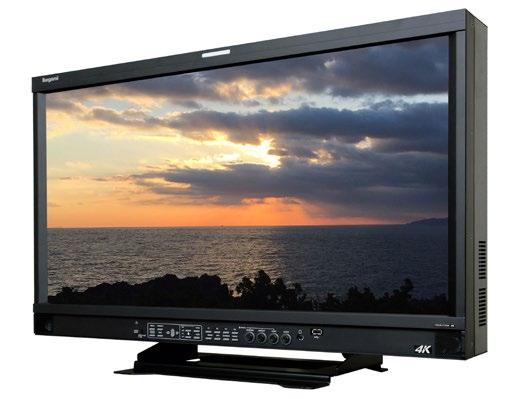
 By Jason Taubman Senior Vice President Game Creek Video
By Jason Taubman Senior Vice President Game Creek Video
Game Creek Video is a technical productions services company responsible for bringing some of the largest sporting and entertain ment events to air through our state-of-theart fleet of mobile production trucks and mobile units. We recently built several new trucks for the fall sports and entertainment season—one of them, named Centennial, is a powerful SMPTE 2110 IP-based broadcast truck designed to handle formats from HD to 4K with full support for HDR signals to ensure superior contrast and color rendering.
Since quality is paramount for every production, it’s important to measure signals coming in from all cameras and ensure each source image matches the others (camera shading). It’s also important to guarantee that the high-quality output is maximizing the wide color gamut and contrast range that the HDR format provides.
Driven by customer demand, we installed six Telestream PRISM IP/SDI waveform mon itors at multiple positions within Centennial. These include camera shading positions, engineering, and the replay area where, either directly or via KVM, the TD, tech manager, and replay operators have access.
We designed Centennial as a “Swiss Army knife” which can deliver whatever capability the client needs. Our goal is always to be as flexible and agile as possible. Centennial was also designed to expand and easily connect to other trucks which is something we pride ourselves on.
As formats and signals have evolved, wave form monitors have had to keep pace. IPbased signals also carry audio and additional metadata, so waveform monitors must also be able to monitor embedded audio signals such as Dolby as well as other ancillary metadata.
While operators need the latest features to monitor IP signals and make objective measurements of HDR, they also appreciate
a traditional layout of waveform monitor and vectorscope. The Telestream team has been responsive to the marketplace by al lowing two full displays from a single scope versus squeezing everything together in a single display, a unique feature our video shader positions rely on. Not having to buy two full units saves on cost and installation as well.
Although Centennial is an IP-based truck at its core, part of its flexible design is the ability to work in a mixed IP and SDI envi ronment. The capability of PRISM waveform monitors to also work in both SDI and IP was an important feature that helps ensure this flexibility. Because the PRISM platform is app-based, our clients can customize and add tools based on their unique requirements.
For Centennial, two PRISM MPD200 mod els are installed at camera shading positions and deliver two screens for both waveform and vectorcope displays from a single unit.
Three PRISM MPX2-25 are deployed with two racked in engineering and one in replay and a single PRISM MPI2-25 is racked in engineer ing for 2110 and 3G/12G analysis.
Because PRISM employs a software-de fined platform, it’s easy to keep these waveform monitors current with updates and any upgrades can easily be deployed in the field. This is a critical design component since there is no time to pull equipment and send it back to the factory for upgrades and modifications when the trucks are constantly on the road.
The timeline for building Centennial was short and with worldwide shortages of parts, we were concerned about delivering the truck to schedule. When one of our main clients made the initial request for the PRISM scopes, we worried that potential supply chain issues might impact our short runway. Thankfully, Telestream was able to pull out all the stops and get us the units we required in time. For that we were very grateful. l
Jason Taubman spearheads Game Creek Video’s efforts in technology leadership and truck design while servicing the company’s vast profile of high-profile sports clients, including ABC, CBS, ESPN, FOX, HBO, NBC, MLB, NBA, the YES Network, NFL Network, and Amazon Prime Video. Since joining Game Creek in 1999, Taubman has led the design and build process for over 60 mobile unit projects, and also helped the company lead the industry to new workflows in HD, UHD, HDR, IP/2110, and remote control of mobile units by client production staff. He can be reached at Jason Taubman jtaubman@ gamecreekvideo.com or 603-882-5222.
For more information visit www.telestream.net.

KAIROS is an IT/IP platform designed to give production professionals unlimited control in delivering rich content to multiple screens and streams for industries ranging from broadcast and corporate to sports and entertainment and house of worship. With the power and flexibility of GPU and CPU processing, KAIROS offers the flexibility to combine several video and graphical sources to support any type of live video production scenario and keep audiences engaged. KAIROS currently features two 4K/HD capable and fully customizable multiviewer outputs (display port). The KAI ROS multiviewers present up to 36 images per output and can display the internal RAM/Clip Player, scene & AUX outputs and audio level meter for seamless screen/ feed management and monitoring.
z For more information visit www.na.panasonic.com/us.
Tektronix’s 2 Series Mixed Signal Oscilloscope (MSO) is designed to go seamlessly from the bench to the field and back, enabling workflows previously unimagined on a scope. It is the first portable oscilloscope to offer benchtop performance and Tektronix user interface. Weighing less than four pounds and measuring 1.5 inches thin, the 2 Series MSO can fit into a small backpack, delivering unmatched performance and porta bility and has an easy to use 10.1-inch touchscreen display that makes working on the go easier and faster. The built-in capabilities of the optional Arbitrary Function Generator
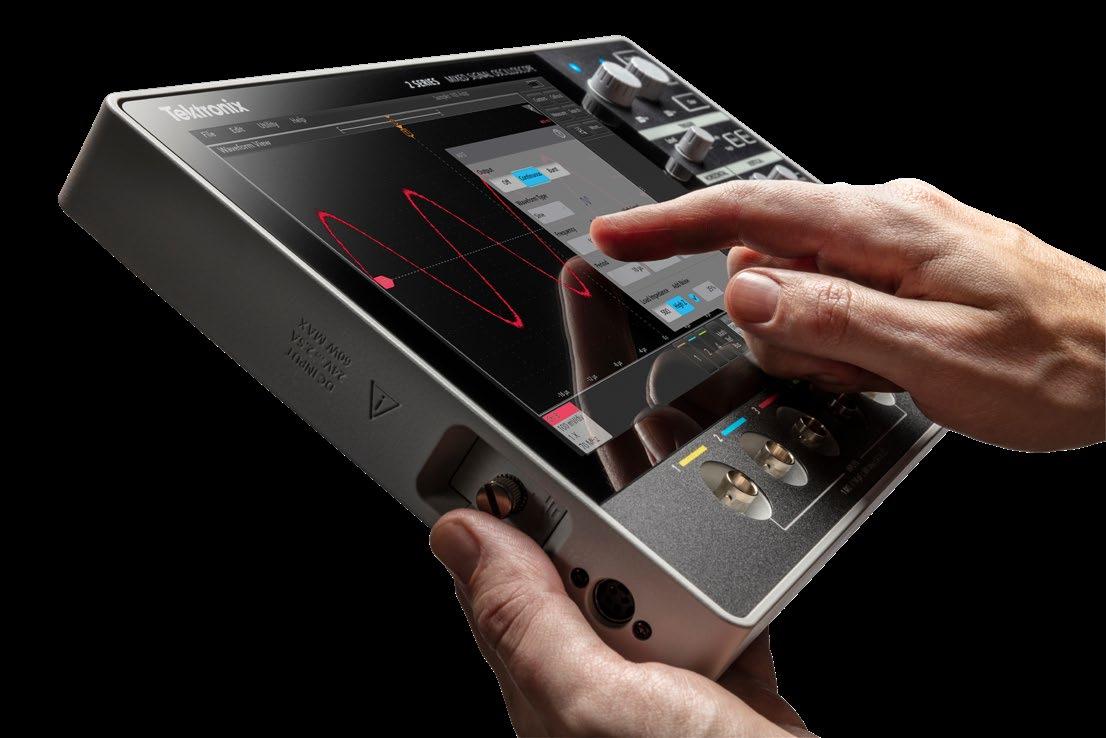
The redesigned ATOMOS SUMO 19SE is ideal for recording and monitoring SDR or HDR footage on set. SUMO 19SE records a single source of Apple ProRes RAW up to 6K at 30fps. It also records up to four ISO 1080 60fps sources (SDI or HDMI) up to 10-bit 4:2:2 Apple ProRes or Avid DNxHR. SUMO 19SE features 24-bit audio with two separate 48V full-size XLR sockets and an option to add battery power. The bright (1200nit) monitor supports Rec.709 or P3 Color gamut for SDR, HDR, camera log, or LUT-transformed images live from camera or played back from removable SSD.
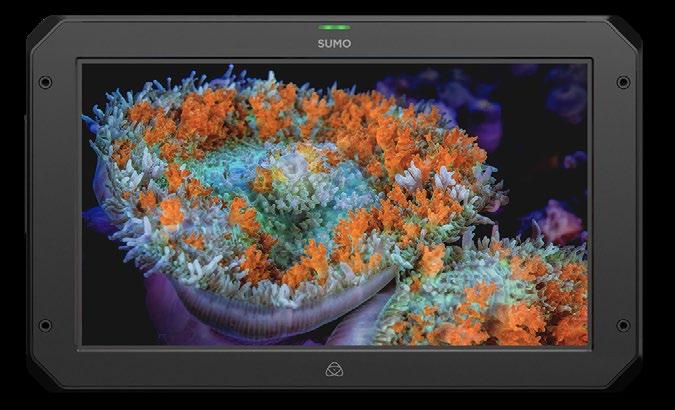
For more information visit www.atomos.com.
(AFG), pattern generator, voltme ter and frequency counter mean users have versatility built into one instrument—increasing what they can do while reducing the number of instruments to carry or purchase. The MSO offers up to eight hours of battery power
For more details visit www.tek.com/en.
digital hits, and more, which can easily be missed during “eyeball only” QC.
By R H Sathya Narayanan CTO ZOO India/Vista India Digital MediaMUMBAI, India—As one of the largest play ers in the global content localization space, with offices worldwide, ZOO Digital is a tech nology provider for premium content brands. ZOO Digital’s localization services adapt orig inal content for different languages, regions and cultures, and its media services ensure that content is technically compliant for all required streaming service platforms. With our services and global capabilities, content creators can extend the reach and financial opportunities for both new and existing en tertainment content.
In 2017, when we were then known as Vista India Digital Media, we explored various automated AV quality checking tools in the market for our automated QC workflows— focusing in particular on their capability, scalability and speed.
The deciding factor in choosing Interra Systems’ BATON solution was based on three key aspects: BATON’s fit with our specific QC needs, its speed performance, and Interra Systems’ responsiveness and support. These aspects are paramount, as automated QC is the first in a long line of processes that ensures content qualifies for downstream flow—with QC being repeated once again at the finalizing stage.
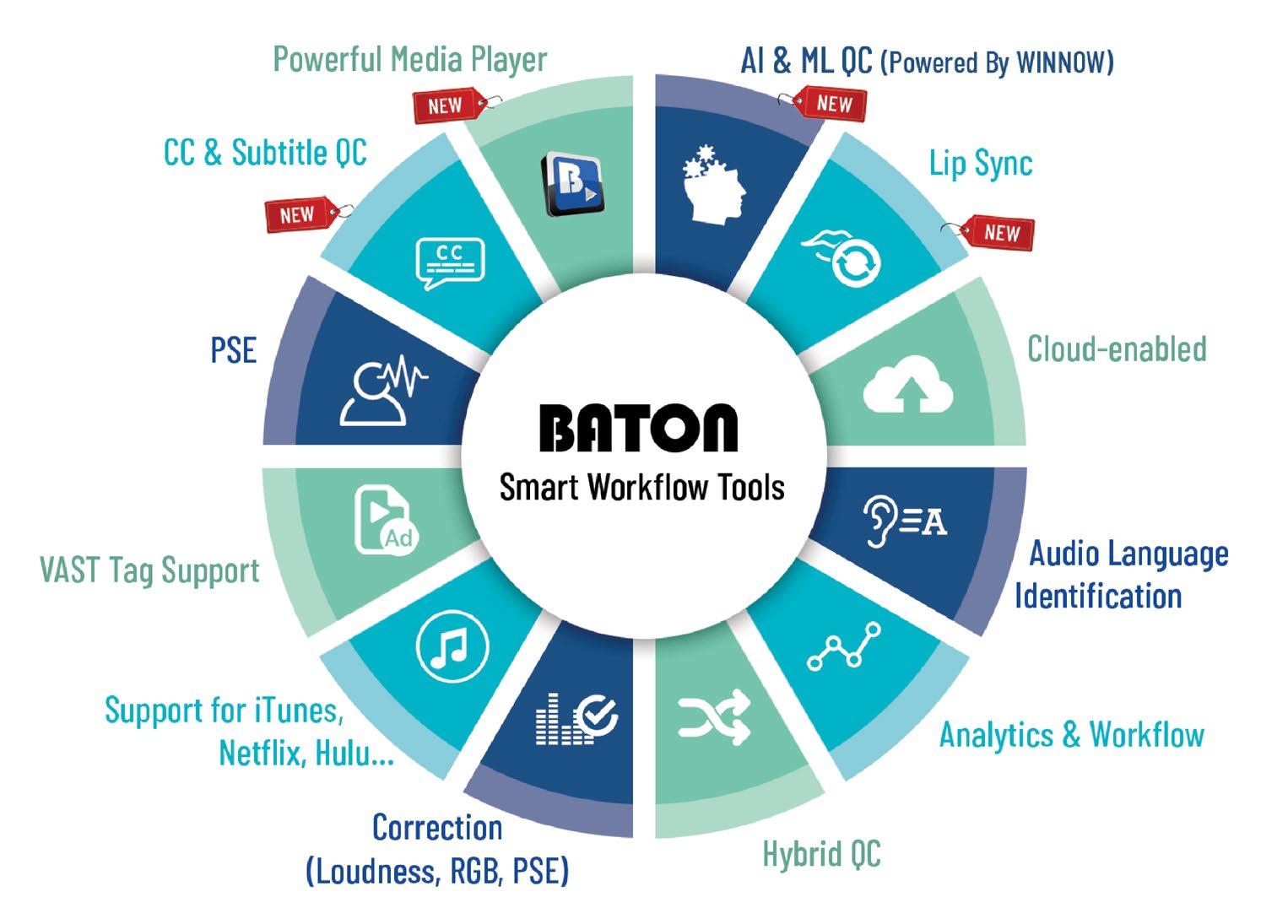
We also liked the responsiveness and sup port of the Interra Systems team who guided us through the trials we conducted ahead of full deployment, quicking answering all of our questions as well as providing flexible licensing options. This gave us a sense of the level of support we could expect from them, and I’m happy to say that they have been consistent.
We have deployed BATON for the QC of all of our mezzanine files for any video and audio anomalies such as drop frames, tics and pops, black frames, and more. These files are usually delivered to a variety of premium OTT platforms.
These partner platforms have highly strin gent quality standards coupled with a need for fast turnaround delivery schedules. Any gaps in content files detected downstream will lead to the reacquisition of content and wasted resources and will also impact the delivery timeline. BATON has helped secure our QC workflow manifolds by saving time, effort, and identifying anomalies like frame corruption,
The AV material we QC with BATON ranges from HD, to UHD, to HDR10. With the volume of work we handle, we typically perform quality checks 24/7. We put BATON through its paces on a daily basis and I’m happy to say that we haven’t experienced any breakdowns since we started using it. BATON has stayed ahead of the curve with the ever-changing quality requirements of various content platforms with frequent upgrades, and shows Interra Systems’ commitment to deliver best in class solutions. l
Sathya Narayanan is CTO at Zoo India / Vista India Digital Media and has more than 25 years of experience in the media and technology space, covering a range of industries including film, animation, gaming, and media technology solutions. Narayanan’s passion is to architect technology solutions related to the M&E mar ket, leveraging years of domain expertise in the media industry. He can be reached at sathya.narayanan@vistaindia.com.
For more information, visit www.interrasystems.com.
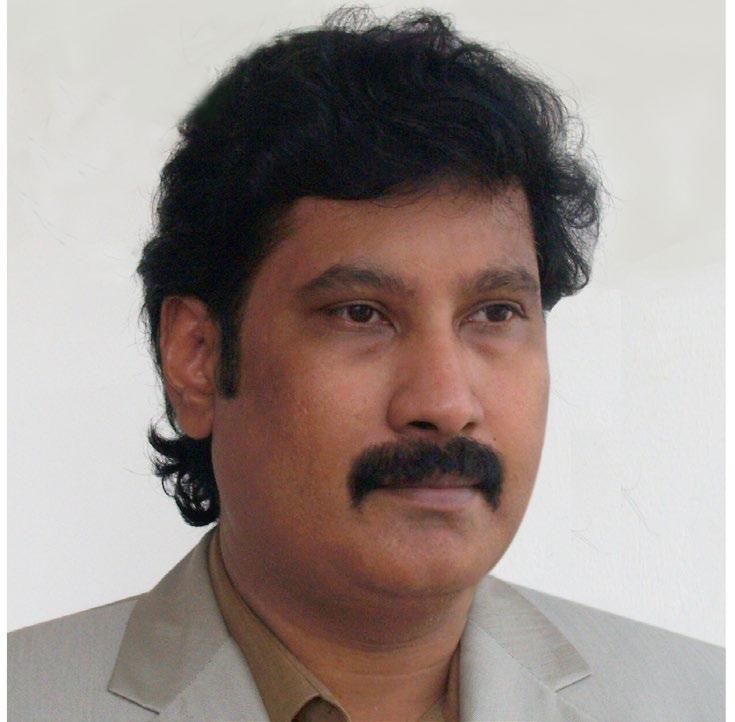
This universal touchscreen control surface is 2RU rackmountable, with an embedded X86 platform and Ethernet connectivity. Tactile-touch is a Densitron proprietary technology that pro vides the mechanical feeling of a button, com bined with optical transparency, and interaction with a touchscreen display. With this technology, operators do not have to look at the spatial location of their fingers, thus freeing them up to look at the associated control and monitoring tasks. This version of the tactile control surface has a single-row of 18 buttons on the lower part of the screen. The upper part of the display and touchscreen area are used for display and interaction. Densitron’s X86 architecture and software ecosystem allows customers to rapidly deploy their applications, thus getting products to market sooner. Both Linux and Windows 10 OS are supported.
z For more information visit www.densitron.com.

TAG’s MCS is the newest layer of the Company’s Realtime Media Performance (RMP) Platform, a 100% IP, 100% software, multi-level, opensource solution that monitors, aggregates, manages and utilizes data-driven viewer analytics to provide users with the insight required to build performant linear media systems. The MCS serves as an aggrega tion engine, system manager and orches trator for data collected by the platform. Using an open-source paradigm, the MCS exposes every piece of data probed and monitored to third-party analytic and visualization applications enabling the information to be used for forensic or predictive analysis to design a precise and pristine viewer experience leading to increased consumption, elevated cus tomer engagement, heightened loyalty and improved business enablement.
z For more information visit www.tagvs.com.

The ClearView quality analyzer serves an uncompressed audio/video output to an encoder, simultaneously capturing the output via IP stream or video decoder, and aligning the resulting uncompressed sequences for testing. It has a new ST 2110- and ST 2022-7-capable interface that supports 4K and UHD formats. In a hybrid SDI and IP environment, users can record or import their A/V source file or use a pre-loaded one; play the source test sequence to the device under test (DUT) as RGB or YUV; record the output of the DUT via MPEG IP network; automatically temporally and spatially align source and processed recordings; and more

z For more information visit www.videoclarity.com.
Kybio is an end-to-end, unified monitoring and control software (NMS) for media and broadcast that is designed to simplify how companies oversee all their IP equipment and infrastruc tures.
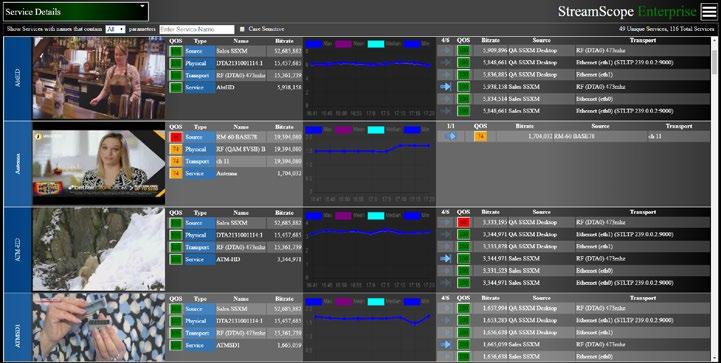

Regardless of network size and complexity, Kybio centralizes key data and provides, across an intuitive web interface, access to powerful insights and tools to streamline operations.
Open, scalable, and easy to deploy, Kybio pro vides a unique combination of built-in modules for real-time supervision, operation support, control, as well as an advanced analytics and reporting engine. Designed for managing OTT, satellite, cable, telco, TV, radio, or live broad cast infrastructures, Kybio ensures operational continuity and efficiency across the entire value chain—from media acquisition, production, down to distribution in an increasingly digital and IPbased environment.
z For more information visit www.worldcastconnect.com/en.
Using Triveni Digital’s StreamScope Enterprise platform, broadcasters can perform nationwide or regionwide QoS monitoring, with the capabil ity to manage a collection of quality assurance elements, view overall system status, and launch problem-solving sessions for specific faults detected. The StreamScope Enterprise platform connects to all of Triveni Digital’s ATSC 1.0 and ATSC 3.0 solutions, including the StreamScope XM ATSC 3.0 Monitor, to streamline NextGen TV delivery. StreamScope Enterprise is also inte grated with Avateq’s AVQ200 RF signal inspector to optimize quality of service monitoring.
z For more information visit www.trivenidigital.com.

Lawo’s VSM Broadcast Control System now features an all-64-bit architecture and tight integration with Arista’s Media Control Service (MCS) for dependable switch port load balancing and reliability in frequently changing setups. In addition, VSM allows users to monitor the health status of processing blades in a similar way to what a dedicated monitoring service provides. This is critical for 24/7 operation across an entire country—and even beyond, if necessary. The picture shows how the status of V__matrix C100 blades can be monitored in real time.
z For more information, visit www.lawo.com.

Mediaproxy has added new features to its LogServer IP compliance monitoring plat form, including extended support for SMPTE ST 2110 & NMOS, NDI extended OTT support and advanced SCTE ad-insertion monitoring. The software-based LogServer is designed to provide reliable and highly scalable logging and monitoring of program output to meet broad cast compliance standards and regulations. It can integrate seamlessly with cloud, virtual or on-premises workflows, providing support for video, audio and real-time data from sources including 4K, HDR, 10-bit, HEVC, TSoIP, SMPTE 2110, Zixi and SRT. Additional new features include clustering of decentralized systems on IP networks, with full cloud support as well as advanced API interfaces. These capabilities give customers fully distributed functionalities across the entire distribution chain.
z For more information, visit www.mediaproxy.com.
The new latency feature for MatchBox measures the actual time of flight from the front of multiple cameras, all the way through the broadcast chain,with millisecond accuracy, providing complete timing-quality assurance, end to end. It can be used to align the outputs from a variety of cameras—wired and wireless— at a live event, a virtual production studio or from remote production units any where in the world to take the guesswork out of the equation and precisely calcu late the delays between them in seconds. Delays between different camera types, especially in different locations can be quickly and accurately measured by the MatchBox Analyzer by simply holding an iPhone running the MatchBox Glass app in shot.
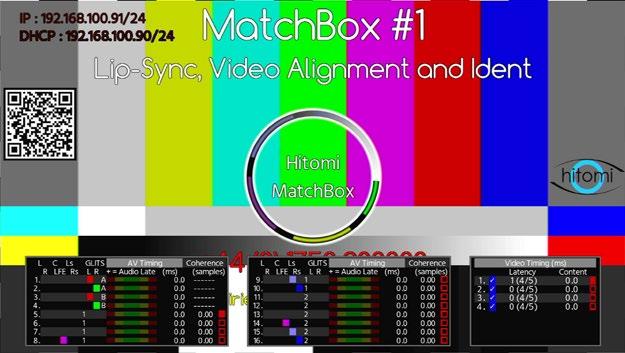

z For more information, visit www.hitomi-broadcast.tv.
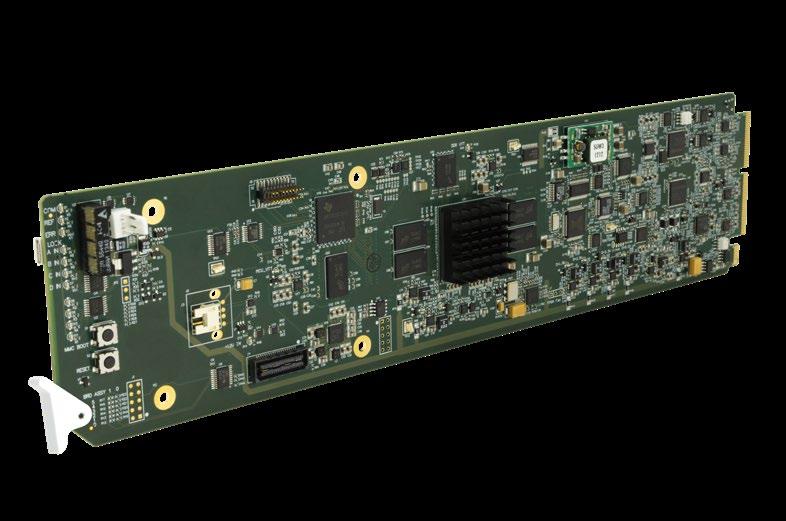
The economical and high-density Cobalt 9978-ANC-MON 3G/HD/SD-SDI Ancillary Data Monitoring Probe openGear-based solution with Multiple-Protocol Data Payload SDI/HDMI Display and Fault Detection/Forwarding is easy to use and offers comprehensive ancillary data monitoring/probing to validate and ensure expected presence and handling of ancillary data in SDI streams.The 9978-ANC-MON monitors and shows status in “plain language” on-screen overlays and the user interface is designed from the ground up to be used by everyday operations personnel. The status burnin overlay is available on the card’s SDI output as well as a convenient HDMI output that can be directly connected to a wall monitor. In addition to its user interface, the 9978-ANC-MON can integrate with automation systems via its IP and SNMP interfaces.

Alisa Bowen has been named president of Disney+. She has led global business operations for Disney’s streaming platforms, in cluding Disney+, since its launch in 2019. Bowen will work with leaders across The Walt Disney Co. to drive focus on innovation, including the forthcoming launch of the adver tising-supported tier, as well as multichannel promotional support for Disney+. Bowen has decades of experience in leadership roles for several global media organizations.

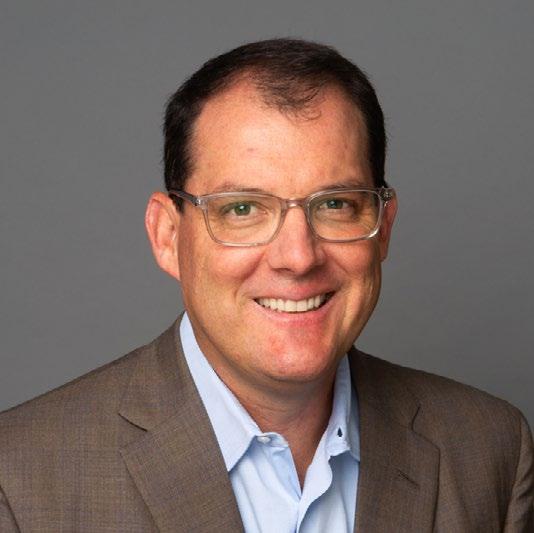
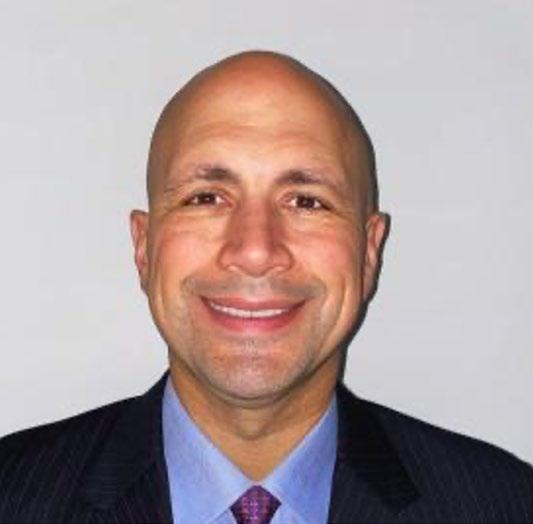
Hearst Television has promoted Stefan Hadl to senior vice presi dent of broadcast engineering and technology. He has worked for the past three years as vice president of engineering, leading a team that helped navigate the operation of Hearst Television stations through the pandemic. That team launched more than 40 digital multicast channels across Hearst TV’s footprint and drove the company’s participation in the nationwide rollout of NextGen TV.
SMPTE has elected Renard T. Jenkins, Senior Vice President, Production Integration and Creative Technology Services at Warner. Bros. Discovery as SMPTE president. “I am honored to be elected as the next SMPTE president,” said Jenkins, who will be the first African American to serve in the SMPTE president role. “I look forward to respecting the Society’s past while working with my colleagues to build a sustain able future.”

The Allen Media Group (AMG) has hired Oliver De La Hoz as the CFO of its Allen Media Digital. He will be based in AMG’s Los Angeles headquarters. He has more than two decades of experience in financial accounting, integration, operations and mergers and acquisitions within the entertain ment and media industry. He was formerly CFO of ITV Studios U.S., where he helped build and manage scripted and unscripted businesses.
Television Board Chair Perry Sook has appointed Steve Haro, EVP for government affairs for Televis aUnivision, to the NAB Television Board of Directors. Haro joined Televisa-Univision in April 2022 and oversees all policy, advocacy and political work for the company. Prior to that he was a consultant for Mehlman Castagnetti Rosen & Thomas; served as chief of staff to Sens. Dianne Feinstein (D-CA) and Martin Heinrich (D-NM).
Bitcentral has appointed Grenville Gooder SVP of sales, leading a team focused on the broadcast and streaming verticals. With more than 25 years of experience, he has been at the forefront of media transformation with Verbit.ai, Vilynx, Kaltura and Brightcove, and or chestrated the launch of enterprise and consumer video deployments from media properties such as The New York Times, AMCtv, Discovery, Hearst and Gannett, to enterprise customers including GM and GE.

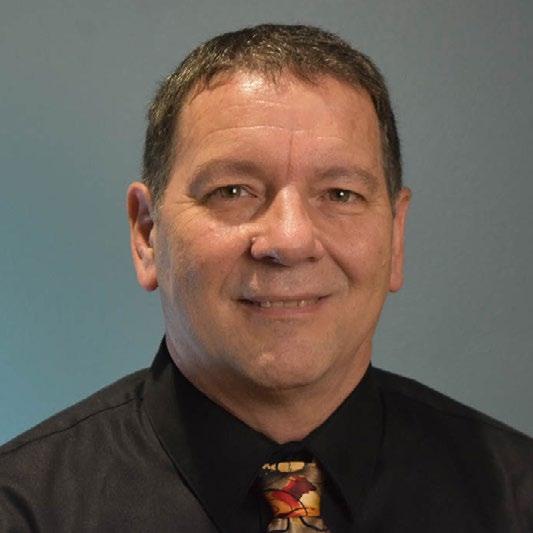

FOR-A has tapped Will Livingston as sales engineer to serve the Southcentral U.S., with a focus on Arizona and Texas. He is also in charge of sales engineering work, including technology demon strations and training. Livingston joins FOR-A after 10 years of experience working with FOR-A switchers, most recently as broad cast video director at Compass Christian Church. Prior to that, he served as production manager at Merestone.

Advanced Systems Group has hired John Small as solutions engineer. He will provide tech nical expertise on infrastructure and workflows to clients in the Los Angeles area and work with client management and technical engineering teams to identify solutions for their media produc tion environments. Small joins ASG from Quantum where he was a pre-sales engineer. Prior to that he spent 16 years in technical roles at CBS.
